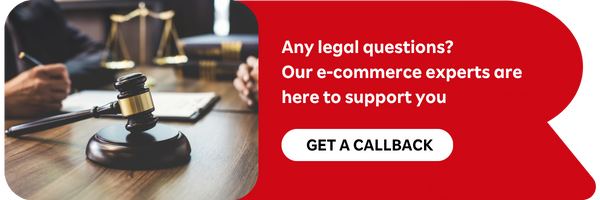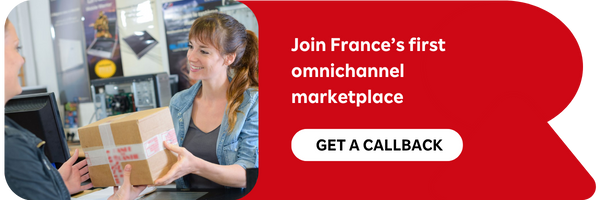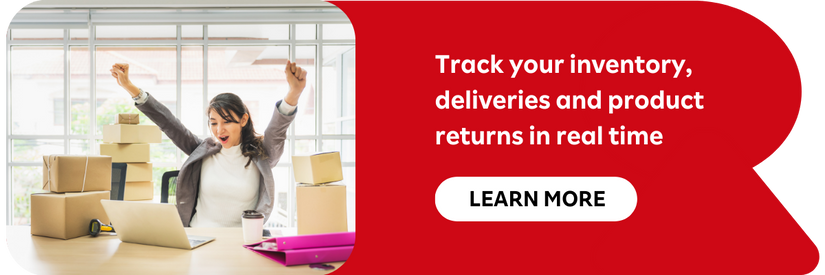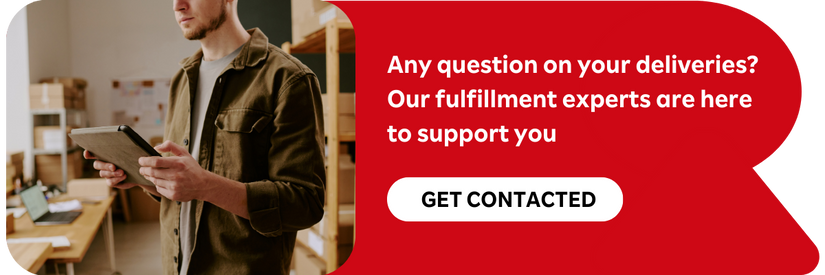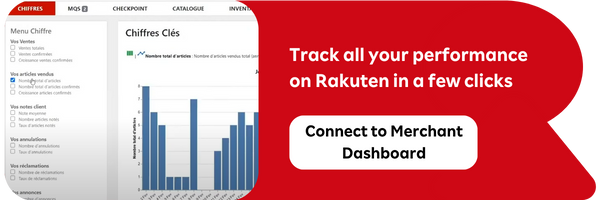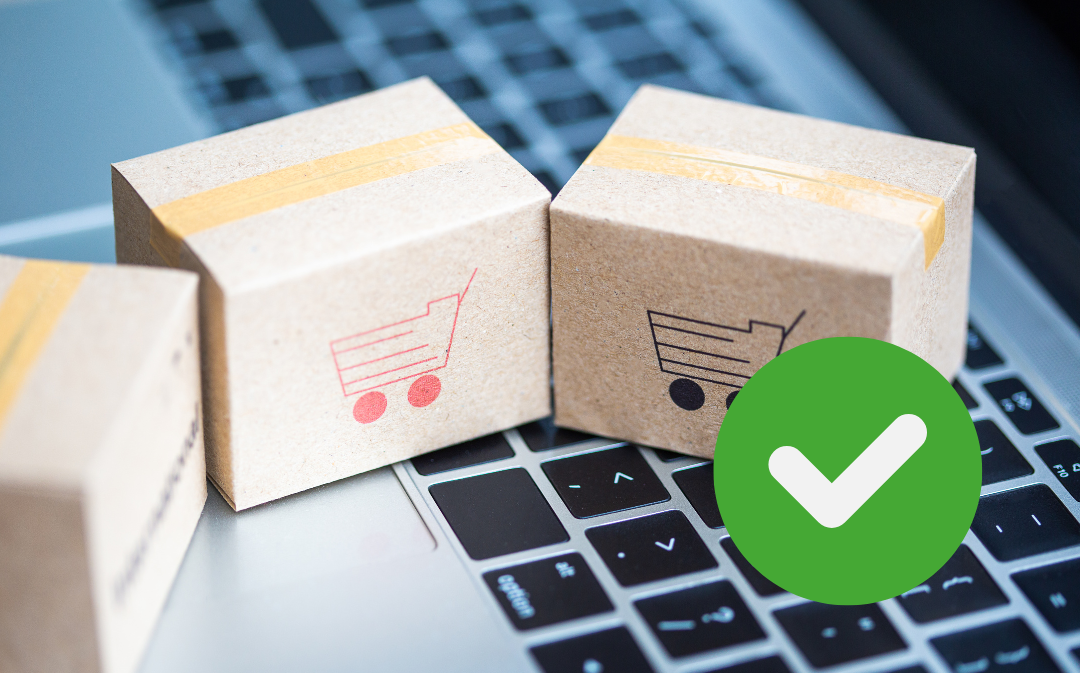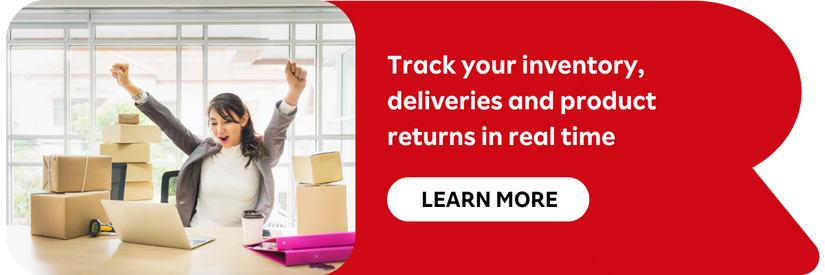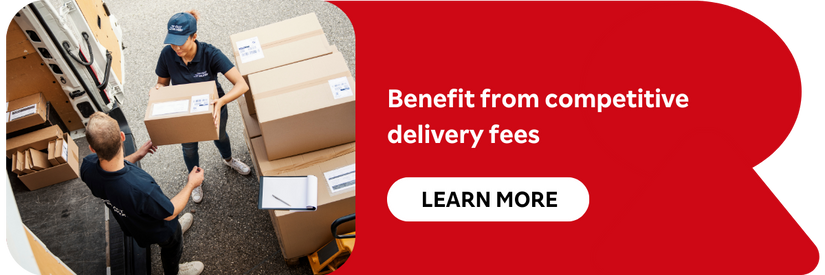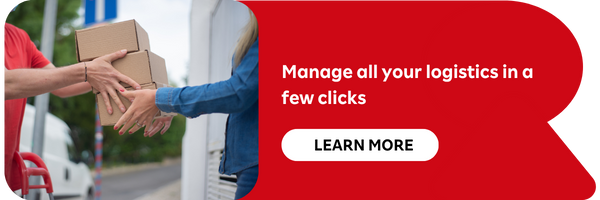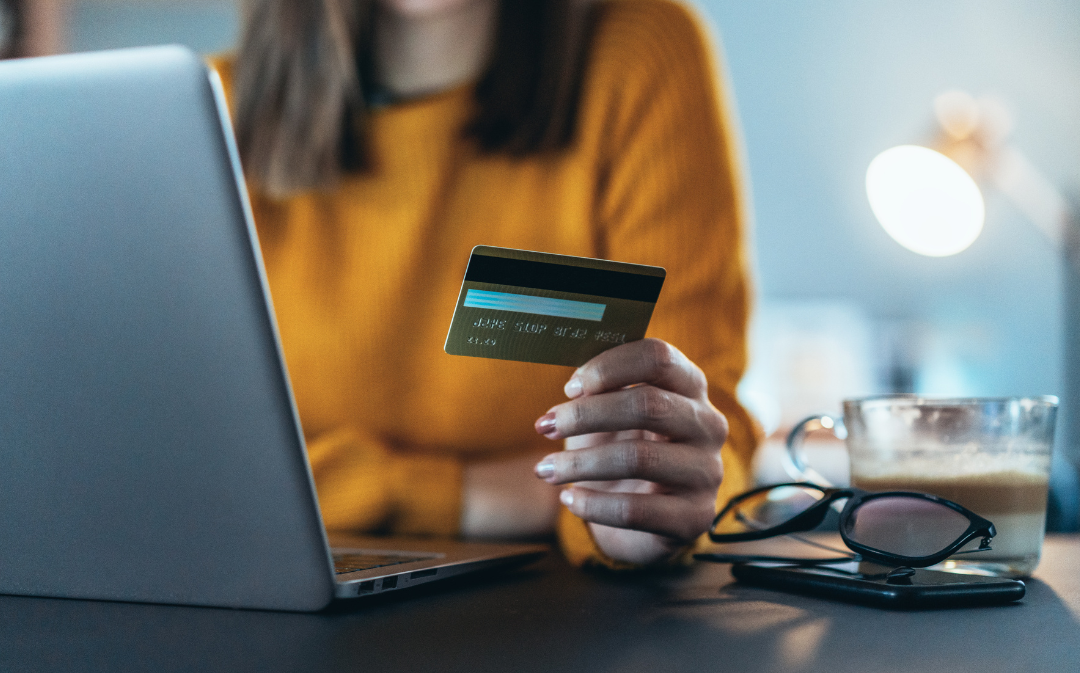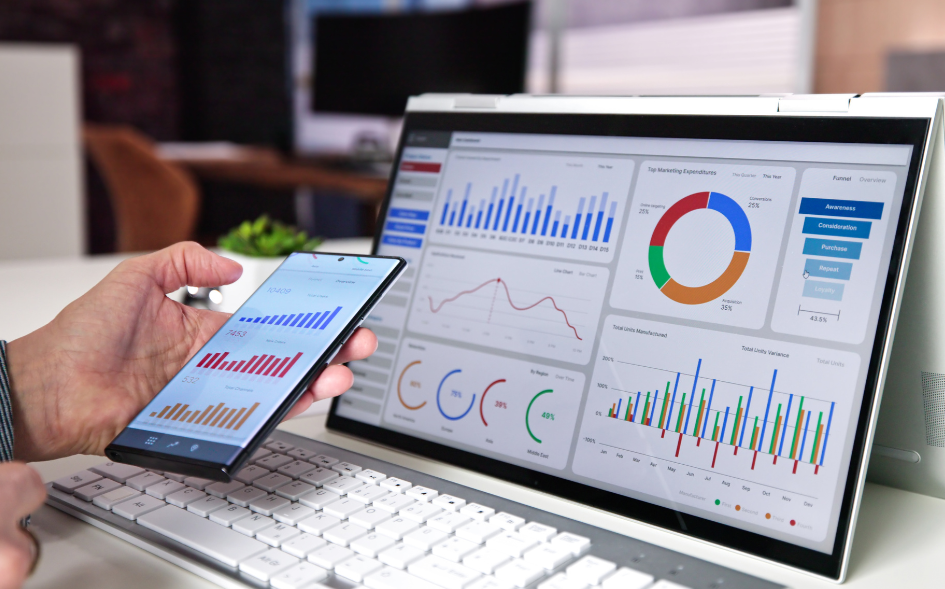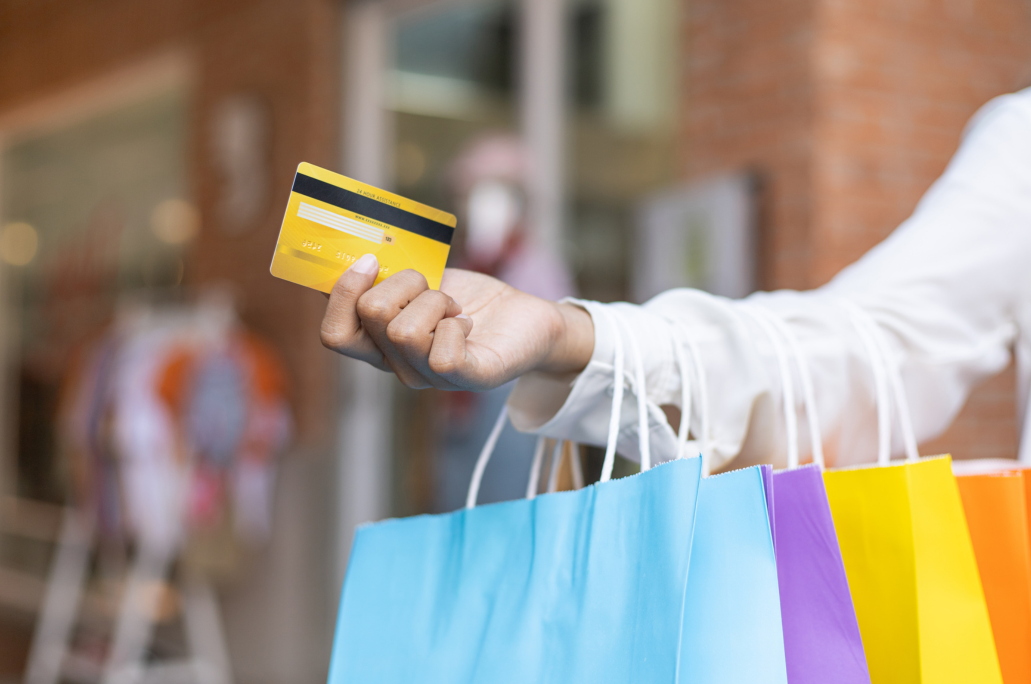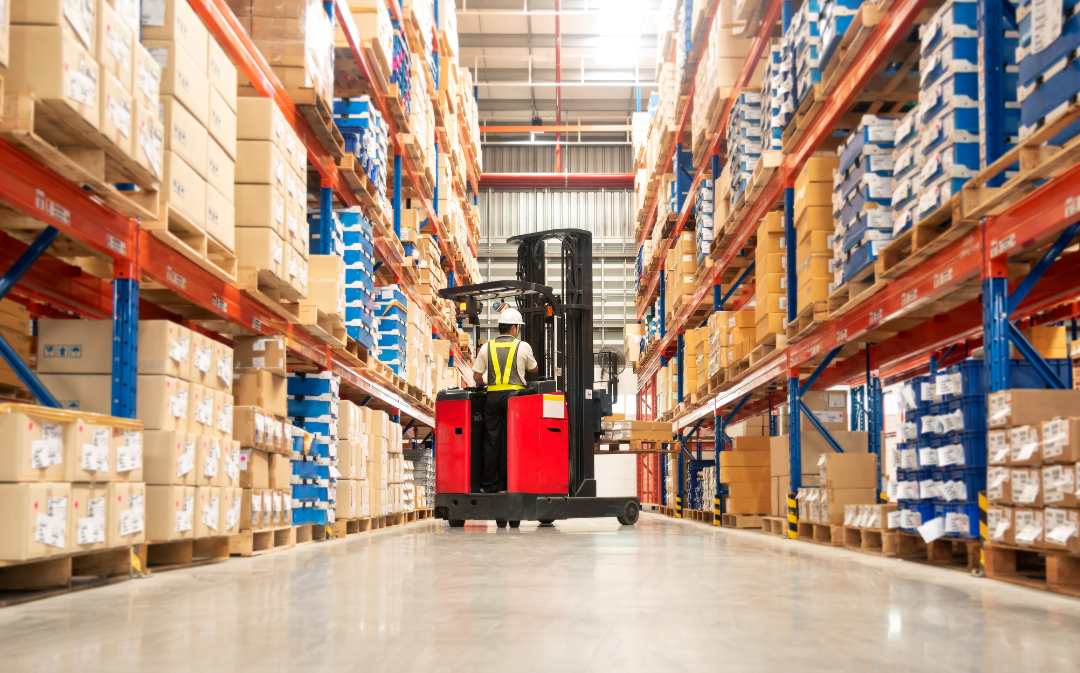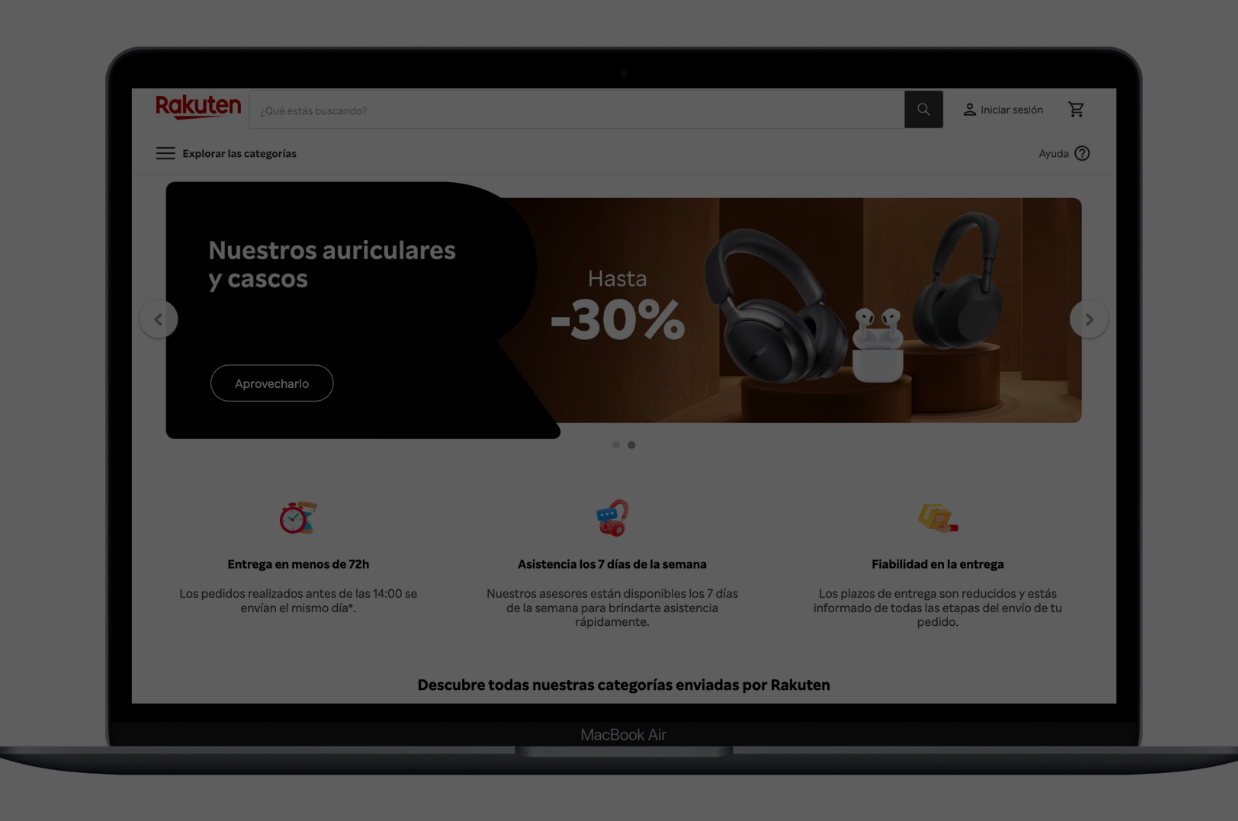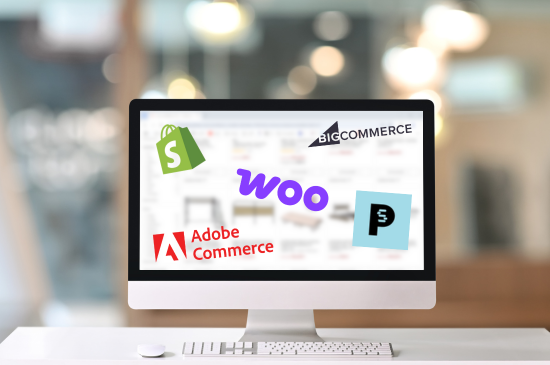Online seller: How to draft your general terms and conditions of sale?
€75,000. This number represents the maximum amount of penalties you risk if your general terms and conditions of sale are not compliant. In some cases, the penalty can go as far as canceling a contract, i.e. a sale. General terms and conditions of sale are the legal cornerstone of your online business. They define your contractual commitments, provide a framework for your exchanges with your customers, and guarantee a clear and transparent framework for every transaction.
Properly drafting your general terms and conditions of sale doesn’t just mean complying with the law. It also means protecting your e-commerce business, reassuring your customers and limiting customer complaints. Clear e-commerce terms and conditions build trust, facilitate day-to-day management and improve your brand image. They are therefore essential.
Let’s take a look at the key principles for drafting comprehensive GTCs that comply with consumer law requirements
What are general terms and conditions of sale?
E-commerce general terms and conditions of sale are a contractual document that defines the rights and obligations of the seller and the buyer. They specify the rules governing online sales conditions: price, ordering process, delivery, guarantees, liability, data processing, dispute resolution and contract validity (for example, when the sale is not considered final until the order confirmation has been sent to the customer).
All professional sellers must compile this information in an accessible document. For private customers, the terms and conditions must be communicated prior to purchase. Article L.111-1 of the French Consumer Code and the Hamon law require full pre-contractual information and clear acceptance of these rules by the buyer.
In the case of professional customers, it is compulsory to have General Terms and Conditions of Sale, but they are not automatically provided. They must be provided as soon as a professional requests them. In practice, it is preferable to provide them systematically, to guarantee clear information and avoid any commercial ambiguity.
The risks associated with non-compliant or absent GTCs are considerable. They include
- Administrative penalties: €3,000 for an individual, €15,000 for a legal entity, according to the French Commercial Code (Art. L. 441-1, L. 441-6).
- Civil penalties for unfair terms: €15,000 for an individual, €300,000 for a legal entity (Art. L. 241-1 of the Consumer Code).
- Legal risks:
- Cancelation of the contract or of certain contractual clauses.
- Litigation, forced reimbursements and damage to your brand’s reputation.
- Difficulty asserting your rights in the event of problems (abusive returns, unpaid bills).
Please note: your terms and conditions may vary depending on your sales channels (website, marketplace or other channels). In all cases, they define the structure of the commercial relationship and complement your general conditions of use.
Why is it important to draft your e-commerce terms and conditions properly?
The drafting of your general terms and conditions of sale is directly linked to the compliance of your business with e-commerce legislation, the respect of consumer rights and the framing of the obligations of each party.
Firstly, clear terms and conditions limit the risk of e-commerce disputes. By precisely defining ordering procedures, lead times, warranties and returns, you reduce uncertainty and disputes. Your terms and conditions are your first line of defense in the event of a disagreement with a customer.
They also protect your business by defining delivery conditions, refund terms, the extent of your liability as a seller, the limits of applicable warranties and the handling of exceptional situations, such as force majeure or improper use of the product.
They also reinforce the trust your customers place in your store. Transparent terms and conditions clearly show how you operate, what the buyer can expect from you, and under what conditions the sale takes place. This transparency creates a climate of security and reassurance that encourages your customers to return, which is an essential element of customer loyalty.
Finally, clear terms and conditions simplify your day-to-day organization. They facilitate the management of orders, returns and after-sales service.
Good to know: it’s advisable to consult a specialist lawyer to check the legal conformity of your general terms and conditions of sale, adapt them to your business and avoid any drafting errors. A simple CGV template or a CGV example found online is rarely sufficient. The law evolves rapidly, and professional assistance protects you from drafting errors and the associated financial consequences
Mandatory legal information in your general terms and conditions of sale
General terms and conditions of sale must include a set of essential clauses laid out by French and European legislation. These provisions apply only to sales to private customers (B2C), and guarantee a transparent, compliant and protective framework for the consumer.
Seller identification and pre-contractual information
The aim of this section is to enable the consumer to clearly identify your company and to have all the necessary information before concluding the contract.
It must include the following information:
- Company name;
- Legal form
- Registered office address;
- Company registration number, share capital, intra-Community VAT number;
- Full contact details;
- Site host;
- Pre-contractual information.
Characteristics of the good or service sold
The purpose of this section of the general terms and conditions is to guarantee the consumer accurate, true and complete information on the products and/or services offered.
It must include the essential elements describing your offer:
- Product description (size, color, material, compatibility);
- Product features;
- Photos and conforming information;
- References to detailed product sheets if necessary.
Order and payment information
The aim here is to clarify each stage of the ordering process for the consumer, as well as the financial conditions governing the sale.
This section should detail the following points:
- Ordering stages ;
- Validation conditions;
- Prices including VAT and ancillary costs;
- Pricing policy;
- Accepted payment methods;
- Payment security;
- Conditions in case of payment default for private and professional customers.
Warranties, liability and claims
This section is designed to inform your customer of the legal warranties available to him, and to specify your liability framework. It should include the following information:
- Legal warranty of conformity ;
- Warranty against hidden defects;
- Any commercial warranty;
- The seller’s liability within the legal framework;
- Conditions of the right of withdrawal.
Data protection and intellectual property
This section of the T&Cs informs consumers about how their personal data is collected, used and protected, while also reminding them of the rules governing the intellectual property of the site and its content. This section should include:
- The data collected and its purposes;
- How long it is kept;
- Users’ rights;
- Cookie policy;
- Content protection: texts, images, logos, trademarks.
Applicable law, dispute resolution and competent court
Finally, this section defines the applicable framework in the event of disagreement between you and the consumer, and specifies the possible remedies.
Your general terms and conditions must include the following information:
- Applicable law: specify the law governing the contract, usually French law for sales made in France.
- The possibility of recourse to consumer mediation: indicate that the consumer may refer the matter to an accredited mediator in the event of a dispute that has not been amicably resolved, and provide the mediator’s full contact details.
- Online dispute resolution platform: mention the existence of the European platform for resolving online disputes between consumers and professionals established in the EU.
- Competent courts: specify which courts may be seized as a last resort, noting that the consumer may bring an action before the court of his domicile or the place of delivery of the product.
Distributing and updating your general terms and conditions of sale: best practices
It’s not enough to write comprehensive general terms and conditions of sale: they also need to be properly distributed and regularly updated. Here are the best practices to follow in order to guarantee reliable and compliant terms and conditions over the long term.
Accessibility and acceptance :
- Make the GTC visible on all key pages of the site, particularly in the footer (the area at the bottom of each page of your site, generally containing important links and legal information), the shopping cart, the order page and the customer account area, so that consumers can consult them before committing themselves.
- Include a mandatory acceptance box at checkout. The customer must tick this box to confirm that he/she has read and accepted the GCS before validating his/her purchase.
- Retain proof of acceptance, for example by means of a timestamp or a copy of the order associated with the version of the GTS in force at the time of sale. This proof can be decisive in the event of a dispute.
Legibility :
- Use clear, accessible language, avoiding legal jargon or overly complex wording, so that your customers can easily understand their rights and obligations.
- Structure GTCs with short paragraphs and bulleted lists, making them easier to read and enabling consumers to quickly identify essential information.
- Offer a downloadable version in PDF format, so that customers can keep the document and consult it offline.
- Use legible fonts and good contrast, especially on cell phones, to ensure comfortable reading on all devices.
Last update :
- Revise your GTCs regularly to reflect legal developments (Hamon law, RGPD, transparency obligations), changes in your products, services or internal procedures.
- Clearly display the date of the last update, so that consumers immediately know which version is applicable at the time of purchase.
- Archive previous versions for a complete history. This makes it possible to prove which version was in force at the time of a past sale, in the event of disagreement or complaint.
Give your e-commerce a solid framework!
General terms and conditions of sale are a confidence-building lever and a fundamental element in securing your business, whether you sell on your own website or on a marketplace like Rakuten. Comprehensive, compliant and regularly updated terms and conditions protect your business, reassure your customers and reinforce your professionalism. Keep them clear, accessible and up to date, so that you can offer your customers a reliable framework within which to develop your business with complete peace of mind
How to leverage online destocking?
Unsold goods account for an average of 3% of company sales¹. If you sell €10,000 worth of products every month, you’re potentially missing out on €3,000 in sales per month. Beyond this loss of revenue, unsold stock also has a significant environmental impact. Fortunately, there’s an excellent solution for reducing this impact and preserving your margins: online destocking.
What is online destocking?
Online destocking involves selling excess inventory via digital channels. The process can be applied to new items (unsold) or second-hand items (product returns, for example). Opting for digital destocking has several advantages:
- Make your items visible on multiple platforms (marketplaces, e-commerce sites, etc.) and reach millions of customers;
- Easily target price-sensitive consumers via digital campaigns: online advertising via Google Ads or Facebook Ads, newsletters, posts on social networks, etc ;
- Easily manage your destocking with the many online tools available: workflow integrators, inventory management solutions, etc.
By opting for a complete solution like Rakuten Fulfillment Network, you can manage all your inventory from a centralized dashboard. Inventory and order management, real-time monitoring of stock levels… all the elements of your logistics can be controlled with just a few clicks
The advantages of online destocking
Optimize your inventory
Online destocking is a key factor in optimizing your inventory. In fact, by selling off your unsold :
- You reduce your warehousing and handling costs, as well as your fixed storage costs: no need to heat and light huge warehouses to let products gather dust;
- Free up space for new collections or fast-moving products. This flexibility enables you to take advantage of peak periods and ride the wave of trendy products before your competitors do;
- You limit stock obsolescence. The depreciation of a new iPhone 16 is estimated at 40% in 1 year, and that of an iPhone 15 is already close to 50%². Destocking allows you to sell your products before they lose too much value.
Reduce your environmental impact
On average, 1/3 of unsold non-food products are destroyed or recycled. Getting rid of your unsold products represents a complete loss for your company, as well as a significant environmental footprint. Keeping your unsold products is not a solution either, as you generate heating and electricity costs, in addition to the reasons mentioned so far. By destocking your products, you reduce your environmental impact and promote a more sustainable approach.
Online destocking is all the more relevant for second-hand or reconditioned products, which you may have in stock following product returns from your customers, for example. By giving these products a second life, you’re part of a circular economy dynamic.
Attract new customers
Online destocking can be a powerful lever for expanding your customer base and growing your business. Here’s how:
- Attract price-sensitive consumers: destocking enables you to offer significant promotions and discounts, making your products more accessible and boosting consumers’ purchasing power. Some customers who wouldn’t normally buy your products may be tempted to place an order.
- Turn “bargain shoppers” into loyal customers: by offering regular clearance sales, you can attract new customers. If the buying experience is positive, these new customers are likely to become loyal customers, generating long-term revenue.
- Increase your visibility: selling your items at bargain prices allows you to make them more visible online. In fact, you’ll have a better chance of winning Buy Boxes on marketplaces, and of being featured in “good deals” or “promotions” pages.
Good to know: at Rakuten, our customers’ purchasing power is a priority. By offering advantageous and fair prices, you optimize your chances of moving up the search bars, top offers and product pages
Increase your sales by taking advantage of exclusivity
To encourage your customers to take action quickly, play on the sense of urgency or exclusivity by proposing exclusive offers for a limited time. You have several options:
-
Flash offers: set up flash offers, valid only for a few hours or days.
-
Exclusive promotions: by offering exclusive promotions to customers who have subscribed to your newsletter or loyalty program, you strengthen your bond with them and encourage them to buy.
-
Cross-selling: take advantage of these limited-time offers to cross-sell complementary products. For example, if a customer buys an item of clothing on special offer, offer them matching accessories. By combining clearance products with products on which you make a full margin, you gain on both fronts.
By creating a sense of urgency and limiting your offers to certain customers, you can significantly increase your sales.
How to set up an online destocking strategy?
To launch a destocking operation, you need to take the following points into account:
Careful presentation of your products
The key to a successful online destocking operation is to make your products attractive and stand out from the competition. Enhancing the value of an item is above all a matter of careful, engaging presentation:
- More attractive visuals: use high-quality photos that highlight your products’ assets, vary the angles of view and take care with the staging to create an attractive visual universe and arouse desire.
- More engaging product descriptions: write concise, punchy descriptions, using vocabulary adapted to your target audience. Don’t hesitate to add technical details, user tips or customer testimonials to reassure and convince potential buyers.
By taking care of the presentation of your product sheets, you’ll increase their attractiveness, generate more clicks and maximize your chances of turning visitors into customers.
Setting up promotions
Promotions are an essential tool for selling off stock quickly and attracting bargain-sensitive customers. Offer discount coupons or vouchers to encourage your customers to take advantage of your stock clearance offers. You can also take advantage of cashback by giving the customer part of the purchase price in the form of points that can be used towards a future purchase. Cashback is an excellent way of building customer loyalty.
It’s a good idea to integrate your promotional campaigns with e-commerce high points: sales, the holiday season, back-to-school or Black Friday are all opportunities to take advantage of the general craze for discounts. Indeed, these events attract a massive audience: 92% of French people aged 16 to 34 said they would buy online during Black Friday 2024³.
Choosing the right platform
For efficient and simplified destocking, partnering with an online platform such as a marketplace offers a number of advantages:
- Increased visibility with a wide audience: Access a vast portfolio of potential customers, considerably increasing the visibility of your products. For example, 13 million unique visitors visit Rakuten every month.
- Simplified management and advanced functionalities: Benefit from intuitive tools and advanced features to easily manage your inventory, promotions and sales. Set-up is quick and easy: on most platforms, creating an account takes just a few clicks, and all sales are managed from a centralized space.
- High-performance promotional operations: Take advantage of numerous opportunities to showcase your products at discounted prices and attract new customers. Some platforms offer regular events, such as Rakuten’s Mega Peak days, which build customer loyalty by offering up to 20% cashback financed by the platform.
- Personalized support: Benefit from personalized support to help you optimize your destocking strategy and achieve your goals. As a Rakuten professional seller, you benefit from a dedicated E-Commerce Consultant who puts his expertise at the service of your sales.
By choosing the right platform, you’ll maximize your chances of successful online destocking.
Sources :
¹Ademe
²PhoneArena
³Ipsos for Rakuten France
FAQ
You must comply with legal obligations regarding customer information (display of prices, discounts, guarantees, delivery and return conditions, etc.). You must also comply with the General Terms and Conditions of Use of the platform on which you are destocking. Beware of the term “sale”: it is strictly regulated and must not be used outside the official dates
All products can be destocked, but seasonal items or items that quickly become obsolete (fashion, gardening, high-tech…) lend themselves best to this. Conversely, items that lose little or no value over time (books, collectors’ items) may be worth keeping longer.
There are a number of KPIs to apply when analyzing an online destocking campaign, such as :
– number of views per product ;
– sales achieved ;
– customer satisfaction;
– product return rate
How to improve your e-commerce SEO?
With over 153,000 e-commerce sites in France¹, standing out from the crowd and attracting customers is a real challenge for any e-business. Competition is fierce, so every visit to your online store counts. By skilfully working your e-commerce SEO strategy, you can attract qualified visitors without relying solely on advertising. You reduce your acquisition costs and build lasting visibility. In fact, SEO isn’t an expense: it’s a strategic investment in the long-term development of your business.
Here’s what you can do today to lay the foundations for your e-commerce SEO.
Why is e-commerce SEO essential?
The term SEO (or search engine optimization) covers all the techniques that enable a site to achieve a sustainable ranking in the search results. For example: a user types in “cushioned men’s running shoes” and lands on your well-optimized online adverts. As an e-merchant, you benefit from a sale with no immediate advertising costs.
E-commerce SEO is therefore vital for :
- Generate a source of qualified traffic, meaning Internet users who are already in a buying or research phase;
- Reduce dependence on paid advertising, and thus optimize your acquisition budget;
- Gain credibility and trust: being among the first results often conveys a strong image of authority and reliability;
- Benefit from 24-hour visibility: your e-commerce site or marketplace store works around the clock, even when you’re not online.
This logic applies equally to your e-commerce site and to your store on a marketplace like Rakuten. Even if these platforms have dedicated SEO teams, optimizing your ads and your e-shop remains essential: you improve your internal ranking on the platform and boost your external visibility, especially through Google Shopping.
The 4 pillars of an effective e-commerce SEO strategy
SEO techniques are constantly evolving, and keeping up to date in this field can sometimes seem complex. However, if you lay the solid foundations represented by these four pillars, you’ll build lasting visibility, on which you can then add more fine-tuned optimizations.
Pillar 1: Understand your customers’ search intent (keyword research)
The first step is to identify what your customers are really looking for. To do this, you need to carry out an SEO competitive analysis and well-executed keyword research. These actions are fundamental to attracting the right people at the right time.
Start with simple methods: suggestions from Google, free tools such as Google Keyword Planner, Google Search Console and, if possible, more advanced tools such as SEMrush or Ahrefs (with limited free versions). These tools enable you to track search volumes, positioning difficulty and the relevance of e-commerce keywords.
It’s essential to distinguish between :
- General queries (e.g. “shoes”).
- Long-tail keywords (e.g. “cushioned men’s running shoes”), which are often less competitive and have higher purchase intent.
- The nature of the query and search intentions can be informational, navigational, transactional or commercial. For an e-commerce store, targeting transactional queries as a priority significantly increases your chances of conversion.
The aim is not just to attract traffic, but to attract qualified visitors who :
- Spend a significant amount of time on your site or ad, discover several offers;
- And above all, make a purchase.
Pillar 2: Optimize your site’s foundations (technical SEO)
Excellent content is not enough if your site is poorly structured or slow. In fact, a technically sound site is essential if you want to rank well.
To improve your technical SEO, here are the key elements to watch out for:
- Loading speed: high loading times hinder the user experience and penalize your ranking. You should therefore regularly monitor Google’s Core Web Vitals, which are indicators that measure a page’s speed, responsiveness and visual stability.
- Site structure and navigation: a logical architecture (categories, sub-categories) that is clear to search engines and users facilitates discovery and indexing. Hn tags (H1, H2, H3…), which structure the titles and subtitles of your pages, should be used consistently.
- Technical On-Page Optimization: title tags, meta descriptions, canonical tags and clean URLs are essential, as they tell search engines the subject and structure of each page. Your e-commerce CMS or extensions (e.g. Yoast SEO) allow you to set these parameters.
- Indexing and crawling (the exploration of your pages by search engine robots): an up-to-date XML sitemap, a well-configured robots.txt file and the use of HTTPS enable search engines to correctly locate, explore and index your pages, so that they appear in search results.
- Redirects (301): automatically send users and Google to the right page when a page on your site is deleted or moved to a new URL. This avoids 404 errors and preserves your SEO.
Pillar 3: Creating relevant, high-quality content (SEO Content)
Good content (a detailed product page, informative blog post or buying guide, for example) plays a decisive role in your SEO and your ability to convert. Without well-optimized, useful content, your technical optimizations won’t be enough.
Here’s how to improve your results:
- Produce high-quality, expert content: unique, relevant, informative that answers users’ questions. Blog posts are an effective way of reaching informational queries and demonstrating your expertise.
- Avoid duplicate content, which represents an SEO risk and can disrupt your visitors’ understanding.
- Use high-quality images and videos in appropriate formats, optimized for size and with descriptive alt tags (text that describes the image for Google and screen readers) for accessibility and SEO.
- Integrate target keywords naturally, while avoiding over-optimization (or “keyword stuffing”). Instead, opt for fluid insertion into your content.
Our advice: always put the user first. Content designed with the user’s needs and reading comfort in mind carries as much weight as the best technical optimizations.
Pillar 4: Build your authority and popularity (off-page SEO / link building)
Once your site is technically optimized and has solid SEO content, you need to build up its authority. In other words, a “clean” site that gets no links from other sites remains isolated and will have a much harder time appearing in the first search results.
Domain authority is a strong signal to search engines. So the more quality backlinks you receive, the more reliable and relevant you are perceived to be.
To develop your authority, use the following levers:
- Produce content exceptional enough to be cited or shared (case studies, infographics, exclusive data);
- Create partnerships: bloggers, influencers, media;
- Guest blogging in your niche by publishing articles on other sites in your sector to gain visibility and quality backlinks;
- Sign up to relevant business directories, local citations (if you have a physical presence) or work on your local SEO; for example: YellowPages, Google Business Profile, customer review sites or specialized directories in your sector.
- Clean up toxic or irrelevant backlinks (via Google’s Disavow Tool) and monitor external redirects to avoid losing earned traffic.
This pillar plays a key role: without authority, technical optimizations and content are insufficient to reach the top positions.
Good to know: avoid excessive reciprocal linking (where you link to another site in exchange for them linking back to yours). They can be perceived by search engines as an attempt to manipulate the algorithm and therefore penalized
Future e-commerce SEO trends to watch
To maintain and develop your visibility, it is highly beneficial to go beyond current practices and anticipating SEO trends.
Here are the trends to keep an eye on:
- Artificial intelligence (AI) and generative search: Google’s AI is changing the way it understands queries and enriching the presentation of results, notably via rich snippets (results displaying additional information such as price, reviews or product availability) or direct answers.
- Mobile-first and UX: today, over 65% of online purchases in France are made from a mobile phone². Mobile optimization is therefore more essential than ever.
- The rise of quality content and user experience: the algorithm now favors sites that are genuinely useful and pleasant to navigate.
- Local SEO and omnichannel strategy: online/offline synergy is on the rise. This can involve the creation of targeted local pages (“buy a phone in Paris”, “in Bordeaux”, “in Rouen”…) to effectively capture local searches. Local SEO is now part of a fully omnichannel approach, where your online actions reinforce your in-store performance, and vice versa.
Make SEO the sustainable engine of your e-commerce success!
Mastering e-commerce SEO means understanding that your business does not rely solely on advertising. It’s built on a system of sustainable visibility, based on keyword research, technical optimization, content creation and link acquisition. Each element plays a specific role and reinforces the whole.
By applying these four pillars, you lay the foundations for a solid strategy. You’ll attract qualified traffic, improve your ability to convert visitors and develop a reliable presence in a constantly evolving environment. Anticipation, rigor and authenticity will remain your best allies for lasting progress
Sources :
¹²Fevad, Chiffres clés du e-commerce 2025
How to manage customer complaints in e-commerce?
As an online retailer, you are aware that customer complaints are part of the job. Delays, order errors, product defects… Each situation tests your ability to react methodically and professionally. Managing these disputes is therefore an essential part of preserving your brand image and customer confidence.
According to the Observatoire des services clients 2025, 75% of the French population contacted a customer service department in 2024. This figure highlights how significantly the post-purchase experience and the quality of customer service influence the final purchasing decision. Responding quickly, accurately and transparently is therefore a real lever for differentiation. With well-structured customer complaint management, based on reliable and efficient CRM tools, smooth communication and a seamless customer experience, you can improve customer satisfaction and strengthen their trust.
Let’s find out together how to turn every complaint into a lever for customer satisfaction and loyalty
Customer complaints: from a challenge to an opportunity for customer loyalty
89% of consumers will not repeat a purchase if they are disappointed by the quality of customer service.
In e-commerce, this dissatisfaction has a direct impact on your sales and your digital customer relations. Limiting dissatisfaction must therefore be an absolute priority.
A high rate of customer complaints has several negative effects:
- Reduced visibility: on Rakuten, this rate is included in the calculation of the Merchant Quality Score (MQS), a score attesting to a seller’s reliability. If you have a low MQS, you’ll be featured less prominently on the marketplace. And less visibility means fewer sales.
- Loss of trust: a dissatisfied buyer questions your reliability and the quality of your customer service and your store, leading to a drop in customer retention.
- Damage to brand image: negative reviews have a lasting impact on your e-reputation, deteriorating the post-purchase experience.
Receiving customer complaints is inevitable. But rigorous, rapid dispute management with a strong focus on customer communication can reverse the trend. Effectively handled, complaints reinforce customer confidence, enhance your image and build customer loyalty.
How to limit customer complaints?
By following certain best practices, you can reduce the number of complaints from your buyers and maintain a quality relationship.
Detail your product adverts
Include all relevant information in your listings:
- Dimensions
- Product specifications
- Operating time
- Warranty
- Repairability index…
For electronic or household appliance items, it is important to specify which features are included or absent.
Pay particular attention to your visuals. Show the product in a real-life use scenario, from several angles and in a setting that reflects its function. High-quality, accurate visuals limit misinterpretation and therefore reduce returns. They also help in dispute resolution.
Communicate with transparency
To limit customer complaints, ensure clarity at every stage:
- Indicate the actual price of products, and specify any discounts, loyalty points or cashback.
- Mention delivery costs: included in the price, offered, or the amount depending on the method chosen.
- Clearly describe available shipping options and estimated delivery times.
- In the event of unforeseen circumstances (lost parcel, carrier error or delay, etc.), notify your buyers immediately via email, SMS, tracking link or integrated messaging.
This proactive communication limits the risk of disputes, enhances the quality of your customer service and allows you to maintain a digital relationship based on reliability and responsiveness.
Optimize your logistics
Smooth logistics reduce the number of complaints linked to late or lost parcels. Here are a few tips for improving your logistics:
- Centralize your inventories
- Automate repetitive tasks
- Select reliable carriers
- Offer several delivery options to meet every need
Have you considered entrusting your logistics to Rakuten Fulfillment Network? This turnkey service, already adopted by thousands of sellers, takes care of everything: storage, order preparation and dispatch, after-sales service and item returns. You gain in reliability, speed and, above all, time to develop your business.
With Rakuten Fulfillment Network, you offer your buyers fast delivery from the European Union (48 hours on average) and benefit from a satisfaction rate of 4.8/5.
5 steps to handling a customer complaint
Despite all these precautions, receiving customer complaints remains unavoidable. The challenge is to manage them effectively, to turn a negative experience into a loyalty-building lever.
Structure your complaints management process
Establishing a solid process lays the foundations for smooth, controlled management of customer complaints:
- Map each stage of the complaint process: receipt via email, chat or telephone, analysis, follow-up, then resolution.
- Allocate a single point of contact for each phase, in order to centralize exchanges, avoid duplication and guarantee consistent and transparent handling of each complaint.
- Adopt a consistent, professional and empathetic tone across all channels.
- Centralize exchanges using your CRM and ticketing tools to speed up responses and guarantee consistent quality of service.
- Finally, create a FAQ dedicated to recurring problems to lighten the load on your teams and focus your efforts on managing the most sensitive disputes.
Process requests quickly
In e-commerce, rapid response is a key factor in customer satisfaction. According to the Observatoire des services clients 2025, 65% of buyers feel that processing times exceed their expectations. Providing an initial response within 24 hours shows that managing customer complaints is a priority, and helps you build trust.
Even without an immediate solution, keeping buyers regularly informed maintains their commitment and positive perception of the service.
Offer concrete solutions
Every customer complaint requires a tailored response.
Analyze the situation, then propose an appropriate solution: refund, replacement of the item, voucher or commercial gesture. Buyers need to feel that you’re genuinely listening to them and understanding their needs.
If the request takes a long time to process, keep them informed at every stage, so that you can provide clear and reassuring follow-up.
Train your teams and prioritize the essentials
A high-performance e-commerce customer service is built on a well-trained team, aligned with the same practices and with a consistent approach to handling requests.
Each consultant must master the processes, adopt the same approach and maintain a consistent tone in handling disputes. Classify requests according to priority: urgency, impact on the customer, on the company (e-reputation, financial loss) or nature of the problem.
Complex claims require human intervention, while simpler ones can be handled by FAQs, chatbots or automated responses, to guarantee responsive, structured handling that’s tailored to each situation.
Use complaints to improve your service
Every customer complaint provides a concrete lesson in the shortcomings of your purchasing process or internal organization.
Analyze your key indicators: complaint rate, average resolution time, categories concerned (product, delivery, payment) and items most affected. By identifying recurring problems, you can guarantee sustainable service quality.
What are the e-commerce best practices to follow?
In 2024, there will already be more than 153,000 active online sellers in France (9% more than in 2023)¹. Succeeding in e-commerce in this ultra-competitive landscape therefore represents a real challenge. Fortunately, there are some good e-commerce practices to help you structure your business, stand out from the crowd, attract customers and increase sales. Whether you sell on your own site, via a marketplace or both, discover the best e-commerce practices for creating a successful online store.
Choose the right sales channels
The first best e-commerce practice is to choose your sales channels carefully, based on your objectives. Here are the three main options available to you:
- The e-commerce site: by selling through this channel, you retain total control over your brand identity, customer relations, e-commerce customer journey and your data. It’s also a space where you can fully customize the user experience.
- Marketplaces (Amazon, Rakuten, Etsy, etc.): these give you immediate access to high visibility, qualified traffic and high-performance sales tools. It’s also an excellent way to test your products with a wide audience.
- Click & Collect or Phygital: this hybrid model combines online sales with a physical point of sale. This solution enables you to offer a local service while optimizing your delivery costs.
Please note: these channels are not exclusive. By combining them in an omnichannel strategy, you expand your audience and improve customer satisfaction. The figures prove it. A study conducted by Fevad shows that 36% of consumers buy fashion items both online and in-store. It’s a strong argument that highlights the benefits of complementary points of sale.
Put the customer experience at the heart of your e-commerce strategy
User experience is a key factor for success in e-commerce. It directly influences your conversion rate, customer loyalty and reputation.
A clear offer and competitive prices
On marketplaces, price is a major differentiation criterion. The best practice is to remain competitive while maintaining an acceptable margin. Our advice: be transparent by indicating whether shipping costs are included, offer clear discounts and avoid hidden charges (e.g. processing fees, unmarked paid options or unforeseen surcharges for certain delivery zones).
Fluid, intuitive navigation
A slow or poorly designed site turns customers away. Here are the best e-commerce practices to adopt:
- Loading speed: your site should load in less than 3 seconds per page to avoid abandonment. Use optimized image formats such as WebP or AVIF to lighten the weight of your visuals without compromising quality.
- Clear design and visible calls to action (CTA): structure your pages with a clean design and strategically placed action buttons, to guide the user naturally towards purchase.
- Mobile first: with 65% of buyers using their smartphone, your website or marketplace must be responsive to ensure a seamless experience on mobile.
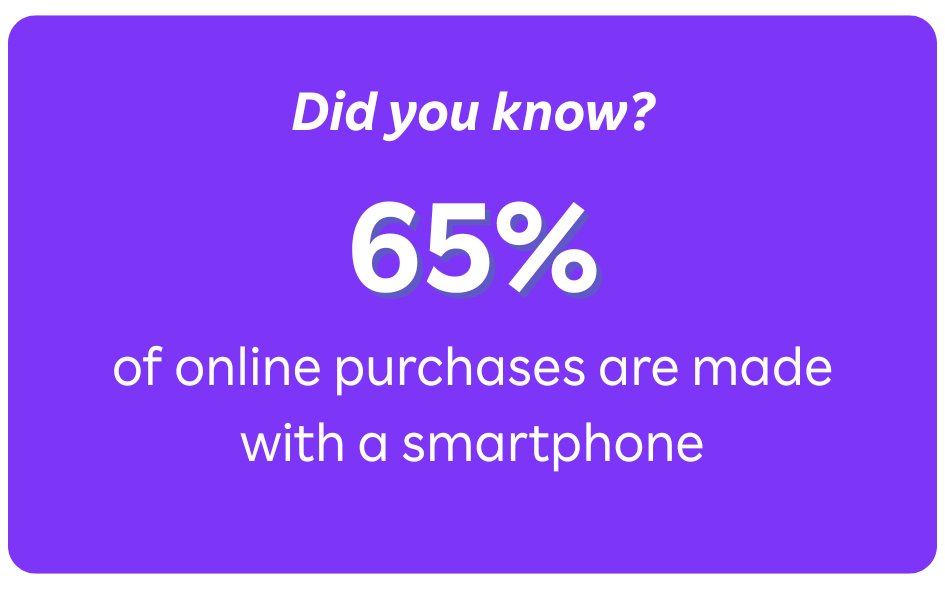
Optimized product sheets
Your online adverts are your shop window. As such, they need to be polished and engaging. Elements not to be neglected are :
- Quality visuals (multiple angles, details, zoom).
- A clear description with relevant keywords for your e-commerce SEO optimization.
- Mandatory legal information (CE marking, manufacturer’s identity).
- Customer reviews and responses to comments to build trust.
Quick and easy ordering process
85% of e-buyers buy online to save time². It’s good practice, therefore, to eliminate all unnecessary steps in the sales tunnel. One-click purchasing, clear call-to-actions and automatic confirmation emails are all key to boosting the performance of your online store.
Varied delivery and payment options
Your customers need to be able to choose how they want their order delivered. To achieve this, offer several delivery methods (standard, express, relay) and payment methods (credit card, PayPal, payment in instalments).
Discover our article on delivery methods, to make the best choice for your business
Impeccable customer service
Your e-commerce customer service is a powerful weapon for building loyalty, provided it follows best practices. To improve it, consider :
- Multiply contact channels (chat, telephone, email).
- Respond quickly to complaints.
- Adopt personalized, human communication.
- Monitor performance with indicators such as complaint rates and Net Promoter Score (NPS).
Visibility and acquisition: best practices for attracting new customers
Having a good product isn’t enough to succeed in e-commerce. You need customers to find you. Here are some winning strategies to help you do just that:
- E-commerce SEO optimization: structure your product pages with clear titles, hierarchical tags and strategic keywords. Take care with descriptions, visuals and metadata to improve your positioning on search engines and in the internal results of marketplaces.
- Targeted advertising: develop high-performance campaigns using Google Ads, Meta Ads or Rakuten Ads. These tools enable you to target your audiences according to their interests, behaviors or purchasing intentions, while controlling your costs thanks to a pay-per-click bidding system.
- Social proof: capitalize on customer reviews, testimonials and product evaluations to build trust. Display your certifications or quality labels if available. Regularly measure your Net Promoter Score (NPS) to assess overall satisfaction and anticipate areas for improvement. This indicator shows how likely your customers are to recommend your store to their friends and family.
- Digital communication strategy: support your e-commerce activity by regularly producing high value-added content: blog articles, practical guides, newsletters, posts on social networks… In addition to nurturing your customer relations, this content contributes to your natural referencing and reinforces your expertise.
- Data analysis: track your key performance indicators (KPIs) with tools such as Google Analytics, the Rakuten Merchant Dashboard or marketplaces’ dashboards. Analyze conversion rates, cart abandonment rates or campaign ROI to make informed decisions and refine your strategy.
Implement these best practices to make your e-commerce a lasting success!
Ultimately, it’s by mastering e-commerce best practices that you’ll lay the foundations for developing your business. From content personalization to secure online payments and e-commerce accessibility, every detail counts. Always remember that it’s your customers who make your store a success. By offering them a seamless customer journey, a personalized experience and impeccable service, you’re building a solid, lasting relationship.
So why not sell on a marketplace like Rakuten? You’ll benefit from a powerful growth lever, high-performance tools and customized support for selling your products online.
Source: Rakuten
Mobile commerce: what advantages for your online store?
Are you an online retailer looking to make your online store more attractive? Consider investing in mobile commerce, or m-commerce. With the rapid growth of this new sales channel, you need to adapt your strategy to meet consumers’ new buying habits. Smartphones and tablets are undeniably playing a central role in the digital transformation of brands and this in turn is reshaping the customer journey. With strong growth in recent years, m-commerce is now a key lever for developing sales and strengthening customer loyalty.
In this article, we’ll look at the following issues:
- Why has mobile commerce become essential?
- How can you optimize your store for success on mobile?
- What mobile commerce trends can you anticipate to stay competitive in this sector?
Understanding the rise and challenges of mobile commerce
Mobile commerce refers to all transactions carried out on mobile devices, and this sales channel is booming. It’s worth taking a closer look at the key statistics, as they reveal the scale of the phenomenon and highlight the opportunities available.
Key figures: mobile commerce, an essential sales channel
M-commerce is particularly well developed in Asia (China, South Korea, Japan), and continues to grow strongly in Europe and North America. Adapting your site for smartphones now means securing a growing share of online sales and responding to new purchasing habits. Here are a few figures to prove it:
- By 2024, m-commerce will already account for over 74% of global e-commerce sales¹.
- Mobile commerce is growing 2.5 times faster than desktop e-commerce².
What are the expectations of m-commerce consumers?
Mobile commerce operates by its own rules, and here’s what consumers expect:
- Convenience: buy anywhere, anytime.
- Accessibility: find a product or promotion easily.
- Time-saving: quick checkout, intuitive navigation.
The smartphone has profoundly altered the purchasing journey: today, everything starts with a mobile search, often followed by an online purchase or point-of-sale pick-up. As a result, a successful mobile conversion now requires a personalized, fluid experience designed for mobile use.
Optimize your store for mobile commerce in 4 steps
Your success in mobile commerce depends on a clear, well-structured strategy: here are 4 steps to follow to maximize your impact.
Identify your mobile audience
First and foremost, it’s essential to understand your mobile audience. An effective m-commerce strategy relies on a detailed understanding of each individual’s profile and usage. The main customer groups are :
- Millennials and Generation Z, who are highly connected, keen to make quick purchases via mobile apps, and sensitive to flash offers and simplified payments.
- Baby-boomers, who also use the mobile commerce site, but prefer clear, reassuring navigation and easy-to-access customer support.
Beyond age, it’s also buying habits that should guide your segmentation. For example:
- Some mobile customers regularly order small items (low average basket, but high frequency): they will respond well to subscriptions or loyalty programs.
- Others prefer more occasional purchases, but with high shopping baskets: in this case, reassuring content, guarantees or comparisons can make all the difference.
Good to know: by segmenting your audience both by generation and by purchasing behavior (frequency, average basket, browsing preferences), you can personalize your offers, your communication channels and your mobile experience. For example: offer 1-click mobile payment for young, regular buyers, and enhanced customer service or buying support for users less familiar with smartphone shopping.
Optimizing the mobile experience
To succeed in mobile commerce, your site and application must be perfectly mastered, including :
- Responsive design: content automatically adapts to screen size.
- Intuitive navigation: a simple menu, visible action buttons.
- Good loading speed: a page should load in less than 3 seconds.
At Rakuten, for example, smartphone optimization is one of our top priorities. To achieve our objectives, our teams of experts are constantly improving the experience on the mobile application and site. So, if you sell on Rakuten, you benefit from a platform optimized for mobile commerce, a key asset for significantly increasing your conversions.
Developing an effective mobile marketing strategy
On a phone, each sales channel must be chosen according to your objective and your customers’ behavior. An effective marketing strategy must therefore be adapted to the mobile medium and customized for each target.
Here are three key levers to activate to boost your m-commerce sales:
- SMS marketing: short, direct and to the point, it works very well for urgent or time-limited offers. For example: “(First name), get €10 free until midnight. Take advantage now! Personalization remains essential: first name, purchase history or customer segment can make all the difference.
- Push notifications: very useful for relaunching an abandoned basket or announcing a flash promotion. They can be sent via a smartphone application or directly from a website (webpush), provided the user has consented to them. In fact, at Rakuten, we use webpushes and an innovative tracking system to precisely target buyers according to their purchasing behavior. The result: personalized reminders and the highlighting of our best offers, at the best time. Push notifications are therefore a powerful tool for promoting your products directly on your customers’ screens.
- Mobile marketing applications: they offer a privileged channel for building customer loyalty. With integrated notifications, account management and loyalty programs, you create a strong bond with your mobile audience.
On the Rakuten app, for example, Club R members receive personalized offers, kitty alerts and promotions targeted to their profile
Secure your mobile commerce to inspire trust
In m-commerce, security is a very important issue. As a professional, you need to be able to :
- Ensure the protection of mobile payments thanks to secure protocols (3D Secure, SSL certificates).
- Protect your customers’ personal data by strictly complying with the RGPD.
Our advice: bet on transparency by clearly displaying your privacy and security policies. A secure smartphone site or application inspires trust… and encourages conversion!
The future of m-commerce: trends and prospects for online sellers
Mobile commerce is evolving at breakneck speed. That’s why, to stay competitive, you need to keep up with the latest trends and adapt your m-commerce strategy today.
Emerging trends in mobile commerce
M-commerce is evolving and being driven by numerous innovations. Here are a few key trends that are already redefining the mobile shopping experience:
- Artificial intelligence: chatbots are already generating 80% of mobile customer service interactions in some industries³.
- Augmented reality, such as virtual clothing fittings or 3D visualization of furniture from the comfort of your living room.
- Voice commerce, which involves searching and buying via voice assistants like Alexa or Google Assistant.
The importance of omnichannel
An omnichannel strategy aims to deliver a seamless, consistent customer experience across all touchpoints, whether physical or virtual. So, to be efficient, mobile commerce must not be isolated. Always integrate it into an omnichannel strategy. To achieve this, you need to :
- Create a seamless customer journey between the website, the mobile app and the physical store. A customer must be able to start their search on mobile, and finalize their purchase online or in-store, without any additional effort.
- Synchronize data in real time across all your channels to offer a personalized experience: saved basket, purchase history, product preferences accessible everywhere.
The need for meticulous logistics to achieve success
The way you manage your logistics partly determines your success. What’s certain is that meticulous management of inventory, orders and deliveries is essential to providing impeccable service, whatever the point of contact your customers use. Why not choose Rakuten Fulfillment Network (RFN) as your logistics partner for optimum management? By making this choice, you benefit from :
- Save valuable time by centralizing your orders;
- Ultra-competitive delivery times (99.8% of orders delivered in less than 24 hours);
- Unique dashboard for real-time inventory and sales management;
- Customer service directly managed by RFN.
We are convinced that logistics performance is a decisive factor in the success of your mobile digital transformation. Take control and boost your company’s success today!
Sources :
¹Fevad, Figures on mobile commerce
²E-Marketer, M-Commerce is the powerhouse of US commerce
³Gartner, The future of retail by 2025
E-commerce right of withdrawal: master your obligations and optimize your returns
Did you know that nearly 60% of online shoppers consult the returns policy before validating their basket? In e-commerce, managing returns and respecting the right of withdrawal are not just legal constraints: they are real issues in terms of consumer protection, customer loyalty and logistics performance. As an e-tailer, managing consumer rights properly not only enables you to avoid consumer disputes. It’s also an opportunity to reassure your customers, improve their shopping experience and turn your returns policy into a real competitive advantage.
The basics of the right of withdrawal
The right of withdrawal is the possibility for a buyer to retract and cancel a purchase made at a distance without having to provide a reason. For example, a customer who orders a jacket online can return it simply because it doesn’t fit, even if there are no defects.
This right is governed by Article L221-18 of the French Consumer Code, and is based on Directive 2011/83/EU. These texts require all professional sellers, located in France or in the European Union, to respect a legal withdrawal period.
Withdrawal period: what the law says
Customers do not need to justify their decision to cancel an order. They can use a withdrawal form or simply inform you in writing of their decision to cancel the order, along with their proof of purchase.
Key points to remember :
- The customer has a 14-day cooling-off period from receipt of the product.
- If you did not mention this right at the time of sale, this period is extended by 12 months.
- The customer must declare his or her intention to withdraw. A simple return without prior notification is not sufficient.
Please note: the right of withdrawal is distinct from the legal guarantee of conformity or hidden defects, which may apply after the 14-day period if the product has a defect.
Products concerned and exceptions
The e-commerce right of withdrawal covers the vast majority of products. However, some products are excluded, in particular
- Personalized or custom-made products.
- Perishable products.
- Unsealed audio/video recordings or software.
- Hygiene articles unsealed by the consumer after delivery (e.g. cosmetics, underwear).
- Goods that cannot be separated from other items (e.g. remote control included with a television set).
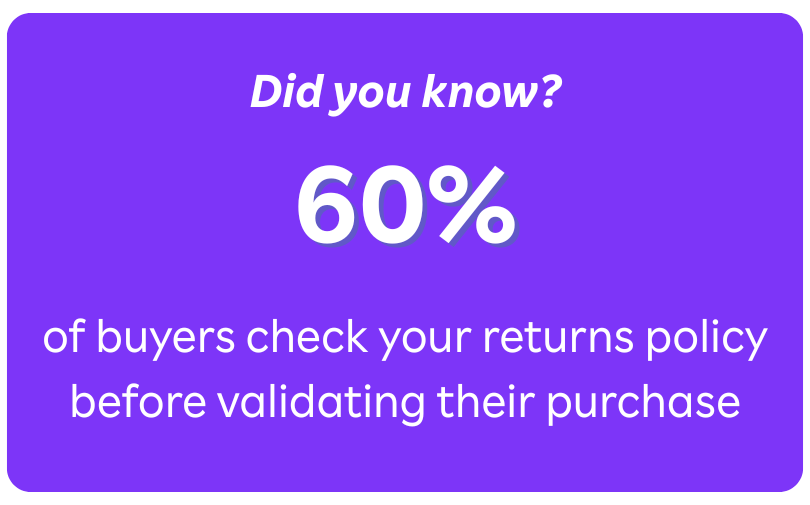
Right of withdrawal: what are your legal obligations as a seller and how do you manage your returns?
Respecting your obligations as a seller means complying with the law, avoiding consumer disputes and successfully building a relationship of trust. To improve your sales rate, you need to set up a clear, consistent and reassuring returns procedure.
Before the sale: inform and anticipate on the right of withdrawal
As an e-tailer, you have an obligation to inform your customers about :
- The existence of the right of withdrawal.
- The legal withdrawal period.
- Return conditions, including who pays the return costs.
- The refund period.
- The existence of any specific withdrawal conditions (or return policy clauses).
This information must be included in :
- Your legal notices.
- Your product sheet.
- Your seller page when selling on a marketplace.
- A clear and visible returns policy.
Further recommendations:
- Provide a simple withdrawal form, consistent with your store’s branding.
- Provide an easily accessible returns policy on all your pages.
- Explicitly state whether the customer is responsible for return shipping costs.
It’s all these little details that strengthen consumer protection… and the trust they place in your online store!
After the sale: managing withdrawals and refunds
Once you’ve received your withdrawal request, you must :
- Send an acknowledgement of receipt.
- Refund the customer within a maximum of 14 days.
Here are the rules to follow:
- The refund must cover the item, as well as standard shipping costs.
- You may withhold the refund until you have received the product or proof of shipment.
- Refunds must be made using the same payment method, unless otherwise agreed.
Please note: the right of withdrawal does not replace possible remedies for defective or non-conforming products, which are covered by other legal protection
Penalties for late refund
Penalties apply after 14 days:
- Up to 10 days: current legal interest rate
- 10 to 20 days: 5% interest
- 20 to 30 days: 10% interest
- 30 to 60 days: 20% interest
- 60 to 90 days: 50% interest
- 5 points per month thereafter (until price is doubled, then increased by the legal interest rate)
Product condition: your rights and their limits
Before granting a refund, you can assess the condition of the returned product. However, there are certain rules governing this control.
- Unwrapped product: the customer may return the product even if it has already been opened, except in the case of unsealed and hygiene-related products. The original packaging is not mandatory, but the return must be secure.
- Depreciated product: you are obliged to accept the return, but a discount may be applied if the item has been used excessively. Example: shoes worn every day for 14 days.
Return costs: a strategic point
Return costs must be an integral part of your cancellation policy. As an online retailer, you have a number of options, but there are also a number of obligations that must be met.
- By default, these costs are borne by the customer.
- If you haven’t specified this before the purchase, you must assume the cost.
- If you offer return shipping costs, this becomes a strong marketing argument to reassure customers.
Beyond obligation: turn returns management into a growth lever
Good e-commerce returns management also helps improve your customer loyalty strategy. This is where returns management comes in. Also known as “reverse logistics”, this involves organizing the return of items for inspection, restocking or recycling.
There are a few best practices for professionalizing your returns:
- Set up a simple, accessible returns procedure.
- Offer a pre-filled returns label.
- Create an automated online returns portal.
- Train your after-sales service to handle complaints, exchanges and non-conforming products, and to adopt empathetic communication.
- Outsource logistics to a specialized logistics provider.
One of the solutions on the market is Rakuten Fulfillment Network’s turnkey e-commerce logistics service. RFN supports you throughout the entire returns chain, from receipt to reintegration into stock. It’s the ideal solution for keeping your teams lean, streamlining the customer experience and focusing on your core business
The e-commerce right of withdrawal, an opportunity to be seized
Much more than a legal constraint, the e-commerce right of withdrawal is a driver of trust, transparency and differentiation. By mastering your buyer’s rights and your seller’s obligations, you can protect your business while strengthening customer loyalty. By going beyond legal minimums with a responsive after-sales service, a clear policy and well-defined return conditions, you demonstrate your seriousness. And by entrusting your returns to a solution like Rakuten Fulfillment Network, you simplify returns management, secure your flows and improve your image. At the end of the day, the right of withdrawal is not an inevitability, but a strategic opportunity
Online seller: leverage one-click purchasing
A study by the Baymard Institute shows that over 70% of shopping baskets are abandoned in e-commerce. Behind this figure lies a simple reality: customers expect a fast, accessible and frictionless shopping experience. When an ordering tunnel is too long or too complex, the majority of visitors leave the page without validating their purchase. One-click purchasing is designed to counter this phenomenon. It accelerates conversion, improves site usability and simplifies the entire customer journey.
What is one-click purchasing?
One-click purchasing, also known as one-click payment, is a process that enables your customers to order without having to re-enter their bank details or address each time they make a purchase. All information is stored once, in a digital wallet or marketplace, and then reused automatically.
Here’s how it works:
- Customers enter their address and payment card details the first time they make a purchase.
- For future orders, a single click is all it takes to validate the purchase.
One-click payment is ideal for physical products, digital services, mobile purchases or subscriptions. Today, many marketplaces and payment solutions integrate this click-to-pay functionality, because it’s the assurance of an enhanced customer experience.
The benefits of one-click shopping
One-click shopping benefits both your customers and yourself as an e-retailer. It makes everyday life easier for your users, while boosting your sales and conversion rates. Let’s take a look at its many benefits.
Offer a frictionless customer experience
With one-click payment, you can considerably improve the user-friendliness of your site and the quality of the customer experience. This solution optimizes every step of the purchasing process, ensuring a smooth experience.
- Fluidity and simplicity: your visitors won’t waste any more time. The user interface is simplified and free of unnecessary steps, creating a smoother customer journey.
- Speed and convenience: time savings are immediate, especially when you’re on the move. This is ideal for mobile purchasing, particularly via applications or browsers.
- Transaction security: no need to enter sensitive data for each order. This makes automatic payment perceived as more secure by many buyers.
Guarantee payment security
To function, one-click purchasing relies on a strict security framework and proven technologies:
- Regulatory compliance: payment solutions comply with PCI DSS (Payment Card Industry Data Security Standard) standards; a set of security rules imposed on systems processing bank card data. Sensitive data is encrypted or tokenized to prevent any risk of leakage.
- Shared responsibility: transaction security is the responsibility of your payment service provider or marketplace, freeing you from technical constraints.
- Strong authentication (SCA/DSP2): reinforced validation is required for the first purchase. Then, if the level of risk is low, subsequent purchases can be made more quickly.
Improve conversions and boost sales
In e-commerce, every click counts. With one-click payment, you shorten the path to purchase and increase your chances of converting an intention into a real order, thanks to real ease of use. The effects are visible in three areas:
- Fewer cart abandonments: thanks to quick conversion, you eliminate time-consuming steps. The shopping cart abandonment rate drops considerably.
- Impulse sales, add-ons and cross-selling: by making it easy to add items to the shopping cart, you encourage cross-selling. For example, offering an accessory immediately after a main purchase is more effective with instant payment.
- Loyalty and repeat business: your customers are more likely to come back if they know they can order at the click of a button. This creates a habit and improves your customer loyalty rate.
Stand out from your competitors and improve customer loyalty
In a competitive environment, speed and simplicity make all the difference. By integratingquick purchase, you strengthen your brand image, improve the customer experience and build a more lasting relationship with your buyers.
- Here’s how express ordering strengthens your positioning:
Optimizing the customer journey: a smooth process enhances the customer experience. Satisfied users are more likely to leave positive feedback. - Easier data collection: one-click purchase data enables you to better target your recommendations and anticipate behavior.
- Competitive advantage: given the same product and price, customers will choose the fastest option. By offering a fast checkout process, you stand out from the crowd.
How to set up one-click payment?
You have two options for integrating one-click purchasing into your website or store:
You can go through a modern PSP (payment service provider): most providers offer this functionality via an API. Choose your solution according to :
- Cost ;
- Ease of integration
- Security guarantees;
- Compatibility with international payments;
The simplest option is to sell directly on a marketplace like Rakuten. In this case, you automatically benefit from one-click payment, with no technical configuration required. Accessibility and security are assured, interfaces are ready, and your customers benefit from an optimized experience right from their first purchase
One-click purchasing: points to watch and best practices
One-click shopping also brings its share of challenges. To get the most out of it, here’s what to keep in mind:
- Initial trust: some customers may be reluctant to register their data. You need to reassure them with clear security messages and give them the option of modifying or deleting their information.
- Impulse purchases that lead to regret: some users may regret a purchase made too quickly. This can lead to returns or complaints.
- Dispute management: even with one-click payment, refund or cancellation procedures remain the same. The PSP or marketplace handles these requests as for any conventional order.
To prevent this, there are several best practices to adopt:
- Be transparent about how the process works.
- Make it easy for your customers to manage their data.
- Communicate clearly about confidentiality and security.
One-click purchasing transforms the online shopping experience. Faster, simpler and more efficient, it’s the perfect way to meet buyers’ expectations. Thanks to one-click shopping, you can improve your conversion rate, offer unrivalled shopping comfort and stand out from the crowd. By choosing a high-performance payment solution or a marketplace like Rakuten, you benefit from a secure, ready-to-use environment capable of supporting the growth of your business
Which payment methods should you offer in e-commerce?
In e-commerce, the choice of payment methods directly conditions your success. It’s not just about processing a transaction, it’s about building the trust that underpins your sales and your image.
The payments landscape is constantly changing. Between the rise of fintechs, the weight of new regulations and increasingly demanding customer expectations, it’s no longer enough to add two or three standard options to your online store. Each payment solution must be considered as a key component of your strategy.
These choices have an immediate impact on your performance, in terms of customer flow, conversion rates, buyer satisfaction and loyalty. A clear and secure payment system is reassuring, whereas a confusing payment tunnel can break trust and slow down sales.
Which online payment methods should you adopt to meet consumer expectations while maximizing your revenues? We’ll help you find out!
Overview of online payment methods in 2025
In 2024, payment behavior was particularly varied. While credit cards remained the preferred method of payment for 89% of customers, 46% of shoppers also used an electronic payment solution, 37% a gift card or voucher, and 22% a bank transfer or direct debit¹. These key figures testify to the diversity of uses and the need to offer your customers several options.
In all, no fewer than seven different payment methods are used by the French today for their online purchases. It’s on these major solutions that we’re going to focus our analysis.
💡 Good to know 💡
If you sell B2B, your customers don’t have the same uses. Companies prefer solutions such as bank transfers or invoice settlements with deadlines, which facilitate cash management while establishing a more secure and lasting business relationship.
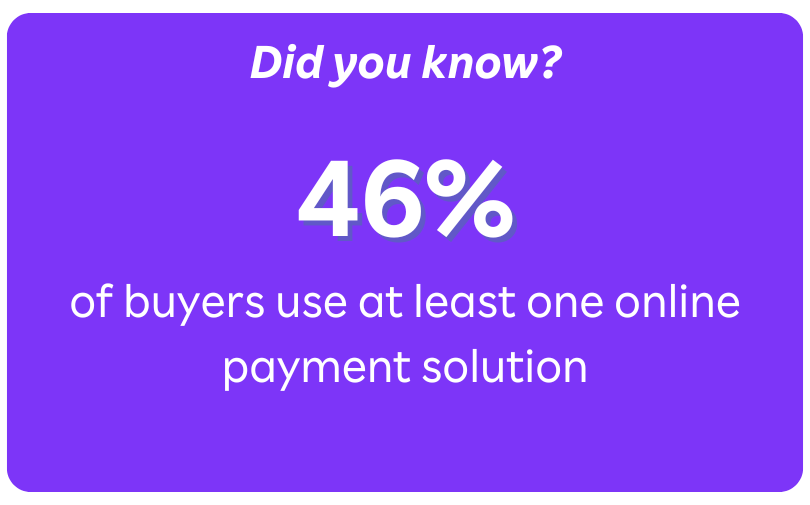
The credit card, the pillar of online payment
The credit card remains the number-one payment method in e-commerce. In 2024, 89% of online purchases in France were paid for by card. This figure illustrates the trust that consumers place in bankcards: they are familiar, easy to use and perceived as secure.
Whether credit, debit or prepaid, the card covers all buyer profiles. Major networks such as Visa, Mastercard and American Express reinforce this dominant position thanks to their reputation and the guarantees they provide.
European regulations have also consolidated this position.
The Payment Services Directive 2 (PSD2) makes strong authentication mandatory for the majority of transactions. The 3D Secure protocol (Visa Secure, Mastercard Identity Check) is the most visible application of this: it reduces fraud by confirming the buyer’s identity.
For e-commerce sites, two best practices are essential to secure card payments:
- Strong authentication: implementation of 3D Secure, now essential
- Data encryption: compliance with PCI DSS (Payment Card Industry Data Security Standard) standards for the processing, storage and transmission of banking information. Data encryption is not just a technical detail: it guarantees the protection of sensitive information and consolidates your customers’ trust.
💡 Good to know 💡
Selling on a marketplace like Rakuten means benefiting from the expertise of teams dedicated to payment security. All payment management is handled and secured upstream, allowing you to focus on your sales
Strong growth in electronic payment solutions
In 2024, 46% of online shoppers used an electronic payment solution, up 9 points in one year. This growth is explained by a simple expectation: pay quickly, especially on mobile, without having to re-enter your card.
E-wallets are the perfect answer to this need. An e-wallet stores your customers’ payment data and speeds up the checkout process. PayPal, Apple Pay, Google Pay and Lydia are among the most widely used services:
- Accelerate purchasing: one-click purchase validation, with data already recorded
- Simplify mobile payment: quick entry via Face ID/Touch ID
- Reinforce trust: no bank data entry on the merchant’s site
For e-commerce sellers, the benefits are just as clear. The main advantages are :
- Rapid conversion: fewer abandonments (biometric validation, no redirections)
- Smoother purchasing: improved experience (auto-fill, in-app payment)
- Additional sales: more impulse purchases and cross-selling
Payment facilities: an excellent conversion lever
Payment facilities allow your customers to spread out or defer their payments. A powerful argument when it comes to closing a major sale.
Still according to Fevad, in 2024, 42% of buyers opted for payment in instalments and 28% for deferred payment. These figures confirm that flexibility has become a real criterion of choice. The main payment facilities are :
- Payment in instalments (fractional payment): allows the buyer to spread the amount over monthly instalments.
– Advantage: makes expensive purchases accessible, increases the average shopping basket.
– Example: 3× free of charge on a €240 basket (3 × €80). - Deferred payment (Buy Now, Pay Later): purchase validated today, payment later.
– Advantage: gives the customer time to wait for payment.
– Example: pay within 30 days. - Direct debit: ideal for subscriptions and recurring services.
– Advantage: regular payments, with no action required on the customer’s side.
– Example: monthly renewal of a SaaS subscription. - Cash on delivery (COD): pay on delivery.
– Advantage: reassures reluctant buyers, zero down-payment.
– Example: hand delivery (cash/check), common in C2C (e.g. Leboncoin).
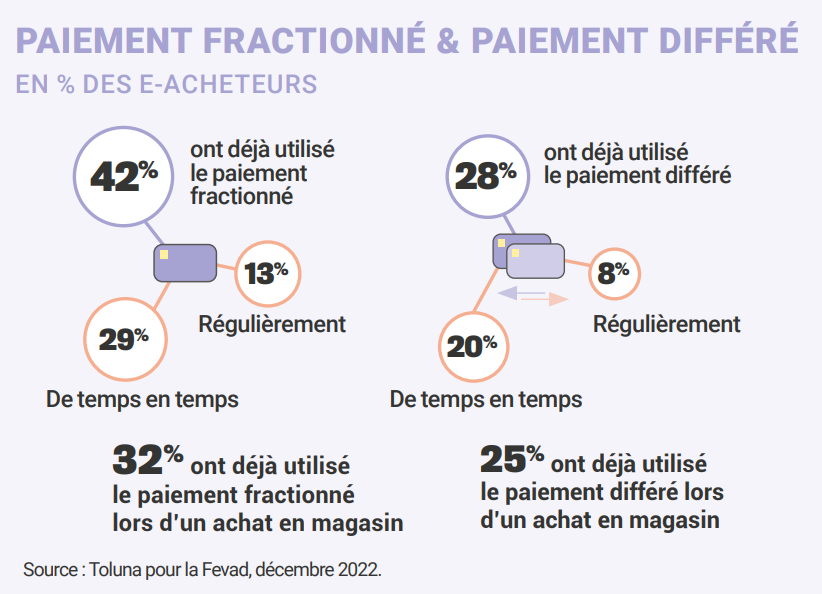
Fevad, key figures for e-commerce 2025
How do I select the right payment methods?
Payment methods are complementary: offering more will satisfy the maximum number of buyers.
- Your target: payment habits change according to generation and geographic zone. Ignoring these preferences risks losing some of your customers.
– For example, in France, bank cards are still the norm, while in the Netherlands, the majority of buyers prefer iDeal. - Your offer: the nature of the product and the size of the basket influence the choice. The higher the price, the greater the flexibility.
– For example, for a €1,200 computer, offering a split or deferred payment option will generate more sales. - Technical and security aspects: the payment API must integrate easily with your store and ensure a secure payment experience. Without it, you’ll increase friction and abandonment.
– Example: seamless integration with Shopify enables automatic transaction management and a more reliable user experience. - Costs: collection fees, PSP (Payment Service Provider) commissions and integration costs all have an impact on your margins. But removing an overpriced option can also slow down conversion.
– Example: accept a surcharge if the payment method actually increases your sales. - Internationalization: selling abroad means adopting local solutions and managing currency conversion. Neglecting this aspect will limit your opportunities. – Example: integrate Alipay to attract Chinese customers, with automatic conversion into euros.
Did you know that?
Rakuten relies on several payment partners specialized in e-commerce to facilitate multi-currency payments at competitive conditions, to support your international sales.
Optimize the payment experience to maximize conversions
A suitable payment method is an asset, but it’s the whole experience that makes the purchase a success. Here are the best practices to adopt:
- Smooth checkout. Reduce the number of steps and limit the number of fields. Offer a clear, legible interface, with help messages. On mobile devices, pay particular attention to ergonomics: adapted keyboard, auto-fill, large, visible buttons.
- Transparency and trust. Display available payment methods right from the start. Reassure customers with security logos and SCA/DSP2 notices.
- Efficient management. Provide access to payment history and send clear summary e-mails. Process refunds and cancellations without delay, with status visible at every stage.
- Personalization and choice. Offer relevant options according to buyer profile and country. Authorize data memorization (with consent) to activate one-click payment and facilitate customer loyalty.
- Dispute management. Define simple procedures for chargebacks and refunds. Set response times, centralize proof (tracking, proof of delivery) and inform the customer at each stage to anticipate disputes.
- Fraud prevention. Train your teams to recognize risk signals. Rely on a PSP equipped with an anti-fraud engine (real-time detection, adaptive 3D Secure, scoring, speed checks, device fingerprinting) and monitor your dispute KPIs.
Future payment trends
Four trends are already shaping the future of payments:
- Cryptocurrencies: their adoption is still limited, but already present in certain technophile sectors.
- Biometric payments: facial recognition and fingerprinting to enhance payment security.
- Embedded payments (IoT): connected cars or smart objects directly integrating the purchase option.
- Artificial intelligence: optimizing fraud detection and personalizing payment paths.
The final word
The choice of your payment methods is not an incidental question: it conditions the fluidity of your payment paths, the confidence of your customers and, ultimately, the growth of your sales.
Whether in France or abroad, your buyers expect options that are adapted to their usage, habits and purchasing power. If you ignore this reality, you run the risk of increasing cart abandonment and slowing down your expansion.
Opening up to foreign markets is also crucial. In particular, multi-currency payment enables you to expand your customer base while maintaining clear, competitive pricing. It’s a strategic lever to support your ambitions and gain in competitiveness.
Source :
¹Fevad, Chiffres clés du e-commerce 2025
Retail media: A key asset for your e-commerce strategy
By 2028, the global Retail Media market is expected to reach more than $175 billion¹. This unavoidable trend is transforming the world of digital advertising. Visibility gains and sales boosts are in store for e-retailers. With accurate data and targeted distribution, retail media are guaranteed to reach the right customers at the right time. Rakuten, a pioneer in e-commerce and a committed player in retail media, already supports thousands of brands and sellers in this approach, thanks in particular to its innovative, incentive-based loyalty program. Want to find out more about this sales tool? Follow the guide
What is Retail Media?
Retail media refers to all the advertising space offered by retailers, whether online or in-store, to brands wishing to promote their products.
There are two main forms of retail media:
- Physical retail media, via point-of-sale (POS) advertising such as shelf displays, interactive screens or displays.
- Digital retail media, or e-retail media, which uses e-commerce sites, marketplaces and other digital channels to deliver targeted advertising.
Let’s take an example: you sell natural cosmetics on a marketplace. Thanks to retail media, you can place sponsored ads directly on beauty search pages. You can also advertise to buyers who have recently viewed similar products. The result: your products are more visible where your customers make their decisions.
It’s an effective method that has a direct impact on engagement and customer satisfaction, by offering content that’s better adapted to their expectations.
What are the 5 benefits of a retail media strategy for your online store?
As an e-commerce professional, you can’t help but notice the intense competitive pressure in the sector, which constantly forces you to stand out from the crowd. Retail media is a strategic lever for achieving this, thanks in particular to these 5 advantages.
Enhanced user experience (UX) and customer loyalty
A good retail media strategy enhances the shopping experience and promotes customer loyalty. To achieve this, it leverages :
- Non-intrusive advertising, seamlessly integrated into the shopping journey, without disruption or annoyance.
- Contextual relevance, with ads that are displayed according to the searches or pages consulted by the user.
- Natural integration of products that appear in native locations, as a logical and useful recommendation.
Precise targeting of an ideal audience
Retail media makes it possible to go beyond simple advertising to reach the right customers, at the right time, with the right message, thanks to :
- Transactional data, using purchase histories to send the right messages to the right profiles.
- Behavioral targeting with campaign personalization based on online behavior.
- Ad personalization, with more engaging and effective tailored messages.
- Maximized relevance as products are shown to users most likely to be interested.
Good to know:Rakuten’s Retail Media offer is based on a unique technology that combines onsite (on the marketplace) and offsite (elsewhere on the web) delivery. As a result, your ads follow potential buyers wherever they go
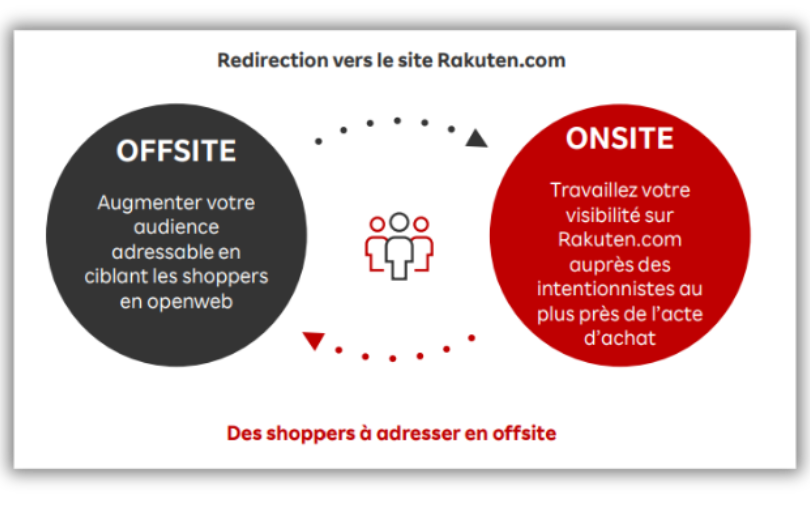
Maximizing your return on investment
In addition, retail media is a cost-effective solution because it offers you :
- Precise, real-time measurement of results (impressions, clicks, conversions).
- Continuous performance-based optimization to maximize effectiveness.
- CPA control to keep your budget under control.
- Increased sales thanks to greater visibility with a targeted audience.
Protect your brand image and build trust
Controlling where and how your products are promoted is essential to preserving your image. Retail media offers you a coherent, reassuring advertising framework in line with your values. It ensures :
- Choice of locations in environments consistent with your brand universe.
- Control over content, with visuals and advertising messages validated by you.
- A controlled environment to avoid juxtaposition with competing or irrelevant advertising.
Prepare your marketing strategy for a world without cookies
Third-party cookies are files that track Internet users on different sites to offer them targeted advertising. They are currently in their last years. Browsers are gradually phasing them out to better protect users’ privacy. As a professional, this means you’ll have to rethink your strategy. Retail media, the solution of the future, is already adapting to this new framework, notably with :
- First-party data collected and used directly from your customers.
- Regulatory compliance, so you can comply with data protection laws.
- A real competitive edge, so you can maintain high-performance, respectful targeting.
How to set up a successful retail media strategy: key steps
There’s no doubt that a successful retail media strategy depends on careful planning and the right choices for your business. Here are a few tips on how to implement them.
Define SMART objectives
The first step is to formulate clear objectives using the SMART method (Specific – Measurable – Achievable – Realistic – Time-bound). A SMART objective helps you stay on track and measure the impact of your advertising actions in concrete terms. For example: “Increase sales of a product range by 20% within 3 months thanks to a retail media campaign.”
Know your target audience inside out
You need to identify the profiles of your most loyal or high-potential customers, their buying habits and their expectations, in order to create messages that are adapted, punchy and therefore more effective. Tools like Google Analytics or Rakuten dashboards, for example, enable you to visualize transactional and behavioral data to better segment your audience.
Choosing the right advertising formats
Native banners, sponsored products at the top of the list, recommended inserts… It’s essential to adapt the format to your objectives and the distribution channel. Each format has its own advantages, so it’s up to you to choose according to your priorities. For example, a mobile banner can be effective in generating quick clicks. On the other hand, a sponsored product on a results page is better suited to direct conversion.
Optimize your product sheets
Clear, well-illustrated and well-referenced product sheets are the key to boosting campaign performance. The ad attracts, but it’s the product sheet that converts! A well-written product sheet includes attractive visuals, as well as customer reviews to reassure visitors
Tracking and analyzing campaign results
Thanks to integrated reporting tools, such as the Rakuten Ads dashboard, you can track your KPIs in real time: click-through rate, conversion rate, return on advertising spend… to fine-tune your actions. Precise management is the key to continuous performance improvement.
Test and refine your retail media strategy
Don’t hesitate to test different messages, formats, segments… to analyze what works best and adjust your campaigns for maximum effectiveness. For example, you could test a retail media campaign with a classic headline, then a version that plays more on emotions, and finally compare the results to find out which has the greatest impact.
Rakuten, an ally in your retail media strategy
Rakuten’s retail media offer is based on a powerful, intuitive platform designed to maximize your impact. With it, you benefit from exceptional visibility for :
- Reach 1/3 of French e-buyers every month.
- Access an audience of 15 million unique visitors.
- Engage a loyal community of 13 million Club R members.
But also state-of-the-art technology with :
- A solution powered by Mirakl Ads, the market leader in retail media.
- Targeting strengthened by an AI-based semantic approach, for even more precise, high-performance ads.
Last but not least, you also benefit from remarkable ease of activation, including:
- An easy-to-use, self-service platform.
- 5 simple steps to launch your first campaign.
- Clear, real-time reporting, with exportable data to measure every euro invested.
Today, retail media is much more than just an advertising lever: it’s a growth gas pedal! By choosing Rakuten as your partner, you’ll benefit from a powerful ecosystem that will ensure your brand’s lasting place in the daily lives of connected shoppers. Take advantage!
Sources :
¹Minted, Why the partnership between Mirakl Ads and Rakuten reflects the rise of retail media
How to drive your business with an e-commerce dashboard?
Do you run an e-commerce site, sell on several marketplaces or use logistics services, but find it hard to centralize your data? You’re not alone. Did you know that the average e-merchant spends over 10 hours a week manually extracting, cross-referencing and analyzing results? Precious time that could be devoted to growing sales. Without a sales reporting tool like a good e-commerce dashboard, you can quickly become overwhelmed by the sheer quantity of indicators, and your decision-making can become less precise. There’s a solution: the e-commerce dashboard. Its role is to centralize your e-commerce KPIs, enable you to choose the right indicators and give you a clear, strategic view of your business.
What is an e-commerce dashboard?
An e-commerce dashboard is a centralized management tool that brings together and presents a certain number of key performance indicators (KPIs). It gives you an instant overview of your online sales activity.
Here are the main benefits of an effective e-commerce dashboard:
- A 360° view: sales data, traffic, logistics, returns, etc., consolidated in a single dashboard tool.
- Informed decision-making: you can anticipate trends (up or down) by observing metrics in real time.
- Quickly identify problems and opportunities, such as late deliveries, critical stock or falling conversions.
- Time-saving analysis: you no longer waste hours collating manual reports.
- Better prioritization of actions: marketing, product optimization, performance-based price adjustments.
- Easier communication: between colleagues, with your partners or with your logistics provider.
- Strategic vision and continuous optimization: adjust according to results to improve overall performance.
Which solution should you choose for your e-commerce dashboard?
There are several options to consider, each with their own advantages and disadvantages. Let’s take a closer look.
Excel dashboard
The Excel dashboard can be created by hand or by downloading an existing template. It’s simple, accessible and highly customizable.
- Advantages: you don’t need an external tool, and it’s easy to set up according to your KPIs.
- Disadvantages: manual updating, risk of errors, not suitable if you have many data sources.
Good to know: alternatives such as Google Sheets, Smartsheet or LibreOffice Calc also offer all the functionality you need to set up a high-performance dashboard.
Dashboard in your CRM
Some CRMs, such as Salesforce or HubSpot, include their own sales reporting dashboard that tracks customer relationship metrics.
- Advantages: overview of the sales cycle, automated follow-ups, tracking of repeat sales or prospects.
- Disadvantages: doesn’t always cover logistics data or web/site traffic, and configuration can be complex.
Dashboard integrated into your marketplace
Another option is to use a merchant dashboard integrated directly into your marketplace. This is the case, for example, with Rakuten’s Merchant Dashboard. This comprehensive e-commerce tool is designed for marketplace sellers. In just a few clicks, it provides an overview of your business: sales, ad management, returns and logistics.
It also integrates shipping data via Rakuten Fulfillment Network, our turnkey solution that centralizes storage, order preparation and delivery.
- Advantages: easy to use, 100% integrated with the marketplace, with reliable, up-to-date data.
- Disadvantages: covers only Rakuten-related activity (to be completed if you sell on other platforms).
Dedicated Business Intelligence (BI) tools
Business Intelligence tools enable you to group and consolidate your data from multiple sources (e-commerce site, marketplaces, CRM, logistics platform…) into a single, customized dashboard.
- The benefits: high analytical accuracy, extensive customization, clear visualization and reports updated almost in real time. These tools make it easier to identify trends, correlations or anomalies that simpler solutions fail to detect.
- Disadvantages: they generally require technical skills or the intervention of a specialized service provider, and can represent a significant cost depending on the complexity of the requirements.
Examples: Google Data Studio, Power BI, Tableau. Related tools such as ERP (Enterprise Resource Planning) or PSP (Payment Service Provider) can also integrate sales reporting modules or logistics indicators, thus broadening the scope of possible analysis.
Which KPIs should you include in your e-commerce dashboard?
Not all e-commerce KPIs are relevant to your online sales operations. Here are the KPIs to add to your e-commerce dashboard, how to calculate them and the type of concrete action they enable you to initiate.
Sales KPIs
The key performance indicators linked to sales are as follows:
- Number of sales: total volume of orders. It enables you to monitor the growth or sluggishness of your business.
→ If this figure is stagnating, launch a promotional operation or improve the prominence of your products on the marketplace. - Average Order Value (AOV) = Total sales ÷ Number of orders. This shows the value generated per order.
→ To increase it, you can offer cross-selling or encourage the purchase of complementary products (upselling). - Repeat purchases = customers with ≥ 2 purchases ÷ total number of customers. It reflects your ability to build loyalty.
→ To improve this rate, set up a loyalty program or exclusive post-purchase offers, for example. - Basket abandonment rate = (number of abandoned baskets ÷ total number of baskets created) × 100. It highlights friction points in the purchasing journey.
→ To reduce it, simplify the order funnel, offer several payment methods and automate reminders. - Sales: total amount of sales. It enables you to measure the overall efficiency of your business.
→ In the event of a drop, analyze your underperforming categories and adjust your marketing priorities. - Gross / net margin: gross margin = (sales – cost of goods sold) ÷ sales × 100. Net margin: net profit ÷ sales × 100. This allows you to monitor profitability by product or category.
→ If margins are falling, renegotiate your purchasing costs, adjust your prices or reduce certain operating expenses.
KPIs related to web traffic
The KPIs that tell you about your web traffic performance are:
- Number of unique visitors: indicates site attractiveness.
Action: invest in SEO or advertising. - Pages viewed per visit, time spent: measures engagement.
Action: improve content and optimize navigation. - Source of traffic (SEO, social networks, advertising, email): find out where your prospects are coming from.
Action: adjust budget according to channels. - Visitor-to-Buyer conversion rate: visitors who go on to purchase. This is a key indicator for making your ads, product sheets and order funnel more reliable.
Cost-related KPIs
Costs are essential KPIs for monitoring the profitability of your business. Here are the ones to keep a close eye on:
- Customer acquisition cost (CAC): total spent on marketing ÷ number of new customers.
→ If this cost is too high, you need to optimize your marketing campaigns, adjust your targeting or work on converting existing visitors. - Logistics costs: storage, order preparation and shipping.
→ To reduce these, consider optimizing your storage management, renegotiating your contracts with your carriers or outsourcing this part of your business via a solution like Rakuten Fulfillment Network (RFN). - Marketing/advertising costs: track spend for each channel, ROAS.
→ In the event of insufficient return, adjust your investments according to the most profitable channels. - Fixed vs. variable costs: fixed costs include rent, subscriptions or salaries. Variable costs depend directly on your business (packaging, shipping costs, commissions, etc.).
→ Analyzing this breakdown helps you better understand your break-even point and identify the items you can act on to optimize your margins.
Logistics KPIs
And finally, the performance indicators that concern logistics are as follows:
- Average delivery time: this is the time elapsed between the order and receipt by the customer.
➝ This KPI is essential, as it directly influences customer satisfaction and the likelihood of a new purchase. - Product returns rate: this corresponds to the proportion of returned products in relation to the number of sales made
➝ A high rate may indicate problems with product description, quality or correspondence with customer expectations. - Out-of-stock rate: this is the length of time your products are not available for sale.
➝ To limit this phenomenon, you can improve your forecasts, set up automatic alerts and strengthen your stock management. - Order Fulfillment time: this is the time between receiving an order and dispatching it.
➝ This time can be reduced by optimizing picking, improving packaging and integrating automated logistics solutions.
Best practices for using your e-commerce dashboard
A powerful dashboard is only useful if it’s used properly. To get the most out of your indicators, you need to adopt certain habits right from the start.
- Define precise objectives: each of the selected e-commerce KPIs must correspond to a measurable goal.
- Update the KPI dashboard at an appropriate frequency: daily for sales, weekly or monthly for costs and loyalty metrics.
- Interpret the data: you can’t just look at the figures. Identify trends or anomalies.
- Act on insights: use your data to learn, understand and implement actionable strategies (optimizations, new campaigns and adjustments).
- Share results with your teams for greater visibility and to empower everyone involved.
- Ensure scalability: add KPIs or sources as your business grows or new tools are added.
To conclude:
Without a good logistics dashboard, you risk losing time, opportunities and clarity. A well-designed KPI dashboard allows you to focus your efforts on what really matters: selling, improving and building loyalty. With the right indicators, the right solution (Excel, marketplace dashboard, CRM, BI tool), and discipline in tracking, you take control of your business. Start building your sales reporting dashboard today
E-commerce: How to boost your end-of-year sales?
The end-of-year sales period, or Shopping Season, marks the major commercial events that punctuate your calendar: back-to-school, Black Friday, Cyber Monday, end-of-year festivities.
But in a context where inflation is weighing on purchasing power, your customers are adapting their buying behavior, and are above all looking for bargains.
In 2024, Black Friday generated 808 million euros in online sales in France¹, up 4.7% from 2023. These figures prove that, even in a tense economic environment, demand remains strong.
Find out how to improve your end-of-year sales with method and ambition, to make this period a decisive highlight for boosting your profitability
Good preparation, the key to successful end-of-year sales
Meticulous preparation is essential to the success of your end-of-year sales: it turns every highlight into a sales and loyalty-building opportunity.
Define your objectives and strategy
- Draw up a precise timetable: The success of your end-of-year sales depends first and foremost on a clear timetable. Include highlights such as Black Friday, Cyber Monday and Christmas, but also your own operations: discounts, coupons or cashback offers.
- Think beyond the highlights: Don’t just wait for the big dates: plan teasing phases to generate interest beforehand, and then targeted follow-ups after each event to extend your promotions and strengthen customer loyalty.
- Set varied objectives: Don’t limit yourself to figures (sales, average basket, repeat purchases). Take advantage of Shopping Season to build brand awareness and acquire new customers.
- Target your segments: Tailor your offers to your audiences, reserving specific benefits for loyal customers and dedicated promotions for new prospects.
- Rely on the expertise of your Rakuten E-Commerce Consultant: he or she will support you in your strategic choices and adapt your actions to your product category.
Prepare your promotions
The success of your end-of-year sales depends on attractive offers that are always profitable. Each promotion must preserve your contribution margin: seducing your customers doesn’t mean sacrificing your bottom line.
Here are the main options to activate:
- Direct discounts via time-limited coupons
- Bundles and flash sales to clear your stock quickly
- Cashback, to stimulate purchases
- Free express delivery, ideal for last-minute purchases
- Double points or gifts to boost customer loyalty
- Enhanced loyalty programs (early access to certain promotions)
- Personalized offers based on purchase history
Don’t hesitate to highlight your end-of-year promotions with dedicated banners, smart pop-ups or publish ephemeral stories on your social networks.
With Rakuten, your most attractive promotions gain in impact: they are highlighted on the home page and in search results, strategic locations that boost your visibility and transform the Shopping Season into a real sales gas pedal.
Don’t forget to distribute your offers via email and SMS marketing for last-minute reminders, but also to relay them through partnerships with influencers and on online price comparison sites like Google Shopping, to ensure maximum coverage.
Anticipate traffic growth
Black Friday 2024 generated an 11% increase in online transactions in France², confirming the scale of end-of-year sales and the challenges they entail. To absorb this surge, every link in your business needs to be ready:
- E-commerce site: monitor server status, correct 404 pages and prepare redirects. Carry out load tests in advance to avoid any blockages
- Loading speed: every extra second increases cart abandonment.
- Optimize your pages to secure your conversions
- Deliveries: more orders means more parcels to process. Plan for longer delivery times and communicate them clearly: transparency = trust
- Customer service: activate auto-reply to acknowledge receipt, prioritize emergencies (payments, blocked orders) and maintain a dynamic, regularly-updated FAQ to quickly answer your customers’ most frequently asked questions
Stocks and deliveries: an essential pillar of your year-end sales
Inventory and logistics management are key to the success of your year-end sales. Rely on past data to establish your forecasts and maintain sufficient levels to avoid stock-outs, the nightmare of every Shopping Season.
Prepare for the increase in orders: optimize packaging and shipping, and reinforce your teams if necessary. Always communicate in advance about your delivery times, even if they are extended: this transparency builds trust and facilitates customer loyalty.
Plan a clear and visible returns policy. A simplified process, such as direct printing of labels, reassures your buyers and smoothes the conversion funnel.
Have you ever considered outsourcing your logistics to better manage your end-of-year sales? Rakuten Fulfillment Network (RFN) takes care of all your operations, giving you the benefit of :
- Centralized management of your orders, including those outside Rakuten
- Competitive rates
- Save time so you can concentrate on your e-commerce sales and customer service
During end-of-year sales, RFN allows you to delegate logistical complexity and concentrate on your sales and seasonal marketing. Dreame, a Chinese household appliance brand, testifies:
“Before RFN, shipping took 7 to 10 days. Today, orders shipped before 2pm are delivered in less than 48 hours, which has considerably improved customer satisfaction.”
Optimize your customer journey
Several steps are essential to ensure a smooth customer journey for your end-of-year sales:
- During end-of-year sales, your buyers don’t tolerate detours. The more unnecessary steps you impose on them, the more likely you are to lose them along the way. By simplifying your conversion funnel (streamlined forms, rapid validation, one-click payment), you offer them a fast, fluid experience that limits abandonment and speeds up the purchasing decision. This efficiency helps build a relationship of trust that lasts well beyond the first order.
- Indicate the price, delivery times and return conditions on the product data sheet: this clarity dispels any doubts and secures the purchase. What’s more, offering several secure payment solutions reassures your customers at the decisive moment. Finally, an optimized mobile experience is essential, since most orders, especially during Black Friday, are now placed from a smartphone.
- On the support side, train or reinforce your teams to effectively manage the increase in demand. At the same time, set up a dedicated FAQ and chatbots to handle recurring questions, allowing your advisors to focus on emergencies. Responsiveness remains paramount. Responding to reviews, even negative ones, shows that you take your customers seriously. This attention turns criticism into an opportunity for dialogue, eases frustrations and reinforces trust in your brand.
By optimizing the customer journey during your end-of-year sales, you’re not just simplifying the act of buying. You’re laying the foundations for long-term success, strengthening customer loyalty while ensuring regular income.
As your needs evolve and your customers’ expectations continue to grow, our E-Commerce Consultants are here to support you!
How to choose your e-commerce logistics platform?
Did you know that nearly 67% of consumers have already abandoned a shopping cart? One of the main reasons: long delivery times. Today, Internet users expect delivery in less than 48 hours. As an online retailer, it can be difficult to meet these deadlines: handling, inventory management, parcel preparation, labeling, shipping, returns… each step can lengthen your delivery times. In the face of these challenges, e-commerce logistics platforms are the ideal solution. They enable you to centralize, speed up and make your supply chain more reliable, so you can better serve your customers and concentrate on selling.
What is an e-commerce logistics platform?
Unlike a traditional warehouse, where goods are stored for long periods, an e-commerce logistics platform is a transit and sorting facility, where goods are usually only held for a few hours.
Among its advantages:
- Smoother flows: optimized reception, sorting and dispatch to speed up deliveries.
- Adapted to last mile delivery (transporting parcels from the logistics center to the customer’s door): their proximity to final delivery zones saves real time.
- Management of seasonal peaks: ability to absorb large volumes (Black Friday, sales, Christmas).
- Reduced operating costs: pooled resources and optimized routes.
- Improved customer experience: shorter lead times and greater reliability.
Imagine a parcel that arrives, is scanned, sorted and immediately routed to the right loading dock for the final carrier. That’s the kind of speedy operation you can expect from a high-performance logistics center.
Essential criteria for choosing a logistics platform
Choosing the right e-commerce logistics platform is a strategic choice that has a direct impact on delivery times and delivery costs, profitability and customer satisfaction. Let’s take a look at the performance criteria you need to focus on.
Logistics platform cost
As an e-merchant, the cost of a logistics platform is often the number-one criterion. But it depends on several factors:
- Volume of orders processed.
- Duration and type of storage (short-term vs. long-term).
- Complexity of preparation (specific packaging, personalization, assembly).
- Additional services: returns management, kitting (grouping several items in a single parcel), logistics-related customer service.
Did you know?
With Rakuten Fulfillment Network (RFN), you benefit from competitive rates thanks to the pooling of carriers. By grouping your orders with those of other partner sellers, RFN organizes optimized rounds by destination: no truck leaves with a single parcel. This collective logistics approach avoids detours, limits empty runs and enables us to offer more advantageous delivery charges
Geographical location
The location of a logistics warehouse has a direct impact on delivery times and costs:
- Proximity to roads, railways, ports or airports. By choosing a well-positioned logistics hub, you benefit from faster distribution throughout the country.
- To sell abroad: a hub close to the target country or a warehouse located in the EU facilitates customs clearance and speeds up cross-border deliveries.
- Proximity to end-consumer markets (densely populated urban areas) reduces the “last mile” and carbon footprint.
Last mile” refers to the final delivery stage, between the warehouse and the customer’s address. This is generally the most complex and costly part of the logistics chain, involving numerous stops over short distances. Reducing this journey limits CO₂ emissions, transport costs and delivery times.
Storage capacity and scalability
The logistics platform you choose must also be able to grow with your business:
- Make sure it has sufficient storage space.
- Plan for scalability during periods of high demand (sales, holidays).
- Examine the flexibility of contracts to adapt surface areas or volumes according to the season.
Don’t lose sight of the fact that fast, reliable order picking is a key differentiator in the customer experience.
Integrated technologies and automation
A modern logistics platform relies on advanced technologies to streamline operations and ensure fast, reliable and cost-effective fulfillment.
- WMS (Warehouse Management System): this warehouse management system enables real-time control of stocks, locations, product movements and order preparation.
- Warehouse automation: the use of conveyors, autonomous mobile robots (AGVs – Automated Guided Vehicles) or robotic arms facilitates handling, goods movement and sorting, while reducing processing times.
- Enhanced traceability: thanks to barcode scanners, RFID (Radio Frequency Identification) tags and computer vision systems, every parcel is accurately tracked at every stage, reinforcing quality control and limiting errors.
- Predictive analysis and artificial intelligence: dedicated algorithms optimize picking, forecast peaks in activity, detect anomalies and manage logistics flows with a high degree of responsiveness.
Did you know? Thanks to Rakuten Fulfillment Network, you have access to a dashboard that enables you to monitor your stocks, orders and returns in real time
Infrastructure type and compliance
Not all products can be stored under the same conditions. An efficient logistics platform must be able to adapt to the specificities of each merchandise:
- Whether fragile, oversized, dangerous or fresh, certain goods require adapted infrastructures: temperature control, anti-shock devices or dedicated storage areas.
- To guarantee compliance, platforms must comply with recognized certifications such as ISO 9001, ISO 14001, or other sector-specific standards (food, cosmetics, health, etc.).
- High-value or sensitive products also require enhanced security features: video surveillance, access control, alarm systems and real-time tracking.
Note: logistics platforms operated by a 4PL (Fourth-Party Logistics) provider, such as Rakuten Fulfillment Network, also integrate strategic management of the entire supply chain, with an infrastructure designed to pilot different types of product flow, even complex ones.
Quality customer relations
The logistics platform must offer you a reliable partnership that integrates :
- Responsive teams and a logistics customer service that communicates.
- Contingency management (delays, damaged products, out-of-stock situations).
- Real-time tracking and reporting tools to help you manage your business effectively.
- High added-value services: kitting, personalization, returns management, parcel tracking, etc.
What are the steps involved in integrating a logistics platform?
Save time by targeting the right logistics platform and integrating it in 5 simple steps.
- Analyze your needs: order volume, product size, destinations, desired lead times and budget.
- Research and audit logistics service providers: technical capacity, references, certifications, geographical area.
- Contract negotiation: rates, SLA (Service Level Agreement), storage conditions, liability and returns.
- Technical integration: connection of systems, stock flow, WMS, compatibility with your store or marketplace.
- Progressive start-up: testing, monitoring of key indicators (costs, lead times, error rates), adjustments.
Have you considered Rakuten Fulfillment Network?
Entrusting your logistics to Rakuten Fulfillment Network frees up your time to concentrate on what really matters: developing your sales and promoting your brand. With its turnkey solution, RFN takes care of all operations: warehouse management, picking, packaging, shipping, returns and logistics transport. You benefit from competitive rates, advanced automation, real-time tracking via an intuitive dashboard, and enhanced visibility for your products on the Rakuten marketplace.
Choosing the right e-commerce logistics platform lays the foundations for sustainable growth. With Rakuten Fulfillment Network, you gain in reliability, performance… and peace of mind. Take back control of your business, and let RFN simplify everything else.
How to create top-performing marketplace listings to dominate the competition?
Did you know that over 50% of online purchases begin on a marketplace? In this ultra-competitive world, your ad is your shop window. It’s what attracts, reassures and convinces… or drives away. If you’re an e-merchant, you can no longer publish an online ad without a solid strategy. Creating effective marketplace listings is like training your sales staff to be irreproachable in the store. You need an engaging posture, a punchy sales pitch and the ability to respond to customer doubts in a matter of seconds.
Would you like some useful tips for optimizing your marketplace product sheets, boosting your online visibility and maximizing your sales? We’ve got you covered!
Why are high-performance marketplace listings essential?
On a marketplace, you don’t sell alone. You share the space with thousands of other sellers. But you can’t afford to get lost in the crowd. The key to your success: an optimized marketplace ad and maximum visibility. A well-constructed ad seduces the algorithm as much as the user. Better still, it moves up the results, attracts more clicks, converts better… and enters a virtuous loop that boosts your performance.
Remember: on a marketplace, everything happens in a micro-second. The customer scans, not reads. If they hesitate, they click elsewhere. That’s why it’s so important to grab their attention in the first few seconds. A well-constructed marketplace ad is a bulwark against buyer volatility. It reduces doubts, anticipates objections and transforms intention into purchase.
8 tips to improve your marketplace listings
To capture attention, convince and sell, every detail of your product listing counts. Here are 7 tips for creating truly effective marketplace listings.
Look after your visuals
Visuals are your first impression. They must be convincing even before the customer reads a line.
- Product photos: high definition, professional lighting, multiple angles, zoom. Also show details (materials, finishes, dimensions).
- Lifestyle photos: show the product in a real-life situation to help customers project themselves.
- Infographics: summarize key benefits (service life, compatibility, warranties).
- Product videos: a real lever for product promotion. Demonstrations, unboxing, testimonials… it’s an asset for triggering purchases.
Note: opt for a good weight/quality ratio for your visuals. Files that are too heavy slow down loading… and therefore sales.

Listing of a Dreame H12 Pro vacuum cleaner on Rakuten
Work on your product storytelling
A product isn’t just a data sheet. It’s a story you need to tell to reach your audience.
- Who are you? A committed brand, a family of craftsmen, a design enthusiast? Tell your story.
- Why this product? What problem does it solve?
- What impact does it have? Local, ethical, well-being… let us know.
Product storytelling creates an emotional connection, sets you apart from the competition and builds a strong brand, all the more so on a marketplace.
Offer a unique value proposition
Why choose your ad over another? That’s the question every buyer asks when comparing products. Your unique value proposition (UVP) must answer this question clearly. In a few words, you need to convey what makes your product or service different: an exclusive feature, a great price, express delivery, free shipping, associated ultra-reactive customer service, local manufacturing.
Our advice: analyze your competitors, find out what they don’t do and highlight your difference in the title and first few lines of the description. This is what will make the customer switch to your side
Optimize your listings for SEO marketplace
Product SEO is the key to success on marketplaces. Before you can convince anyone, you have to be found. And to do that, you need to optimize each marketplace ad with the right keywords: the ones that web users use.
To optimize your listings, use the search suggestions on the platform itself to identify the most frequently entered terms. You can also use tools such as Google Keyword Planner or Ubersuggest to complete your analysis. In practice, integrate these keywords naturally into titles, subtitles, descriptions and image tags. Also consider synonyms and related keywords. The result of a good SEO marketplace strategy: you move up the rankings, you benefit from greater visibility and your sales increase.
Adapt to your target
A good product that’s poorly presented remains invisible. The tone, vocabulary and level of detail must be adapted to your target audience. Let’s take an example: a tech buyer doesn’t expect the same thing as a decorator or a parent with young children. Similarly, depending on the platform, expectations change. On Leboncoin, the expectation is simplicity and honesty. On Rakuten, on the other hand, customers expect complete listings, visible guarantees and fast delivery. By knowing your audience, you can address them with the right codes
Be transparent and exhaustive to build trust
The faster buyers find information, the more reassured they are. To leave no stone unturned, you need to clearly display the following information on your marketplace ad:
– Price.
– Any discounts.
– Delivery times.
– Shipping costs.
Mention all technical specifications, dimensions, compatibility and legal requirements. For example, for household electrical appliances, the energy label is essential: it provides information on consumption and can have a significant impact on the decision to buy.
It’s simple: the more precise your ad is, the less the customer will need to look elsewhere. You make it easier for them to make their decision, and at the same time reduce the risk of product returns.
Respond to customer objections
All buyers hesitate. That’s why your marketplace ad needs to anticipate any questions they might have, and respond to customer objections to remove any obstacles to a sale. Easy to assemble? Washable? Durable? Made in France? Include the right information in the description and, if possible, add a FAQ. You’ll show that you understand the customer’s needs and help them make up their mind.
And don’t forget the impact of social proof: customer reviews, ratings, testimonials… On Rakuten, for example, these elements directly influence product referencing and the visibility of your listings. The more you reassure, the more you sell.
Actively manage your inventory and prices
A product marked as “unavailable” is also a lost sale. An ad with zero stock is automatically delisted on many marketplaces. Our advice: keep your stocks up to date and adjust your prices according to the market. Keep an eye on the competition, and if necessary, use repricing tools to stay competitive without cutting into your margins.
Tip: don’t hesitate to activate special offers. Temporary promotions, instant coupons, free delivery… these online sales techniques catch the eye and trigger purchases.
As you can see, a good marketplace ad is a conversion lever, a strategic tool and a powerful sales pitch. It speaks for you, captures attention, convinces and reassures. By applying these 7 tips, you’ll build a strong presence and stand out from the competition. The result: every visit to your store becomes a sales opportunity.
Need more? At Rakuten, we’ll help you optimize your marketplace product sheets and provide you with tools to boost your online visibility. Take advantage of these services today to put your listings on the map
Rakuten France announces European marketplace expansion: Spain as the first step in a strategic rollout
Paris, September 15, 2025 – Rakuten France, a leading player in French e-commerce and a pioneer in the circular economy, today announces its international marketplace expansion, with Spain as the first strategic market. This new marketplace will offer Spanish consumers and merchants an e-commerce experience that combines accessibility, high-quality service, and responsible consumption, powered by Rakuten France’s technological expertise, particularly in artificial intelligence. This marks the beginning of an ambitious, phased development plan for Rakuten France’s marketplace operations across Europe.
Driving international growth with an optimistic vision for e-commerce
Rakuten France is reaching a pivotal milestone in its journey by embarking on international expansion. This strategic decision to enter the Spanish market aligns with its optimistic vision for e-commerce, supported by a successful model already proven in France. As a digital, inclusive shopping mall, Rakuten France enables safe interactions between buyers, sellers, and brands. Its unique partnership approach ensures that the Rakuten France marketplace platform never competes with its merchant “clients.”
This expansion is built upon three strategic pillars that drive Rakuten's success in French e-commerce:
- Supporting merchants in their digital transformation and logistics with innovative, tailored solutions such as Rakuten Fulfillment Network (RFN), an international network of logistics experts handling complete order management – from storage to shipping, tracking, and returns. 99.8% of orders placed before 2 p.m. and handled by the Rakuten Fulfillment Network are delivered to their destination within 24 hours.
- Boosting purchasing power, embodied by the Club R cashback program, the most generous loyalty program in French e-commerce, which has already redistributed over €200 million to shoppers.
- Championing responsible consumption with a diverse selection of second-hand products, including pre-owned and refurbished items.
Rakuten France’s expansion into Spain represents a tangible first step in scaling this unique and virtuous model across Europe.
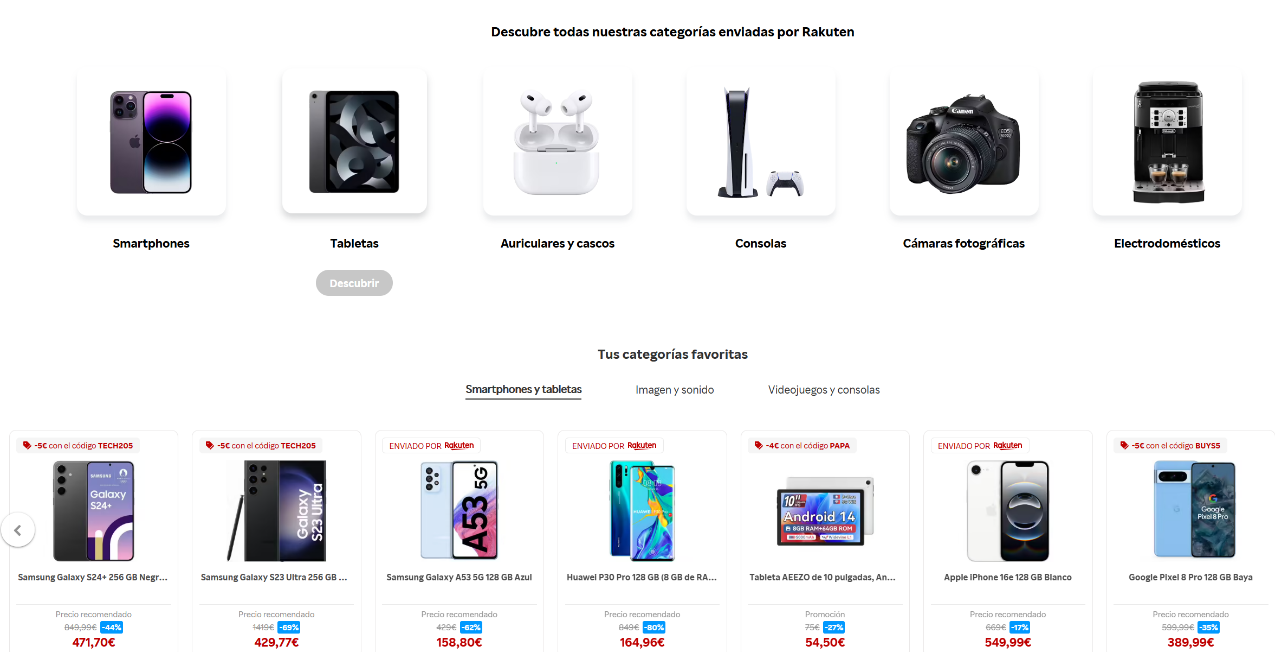
Spain: a key market and the starting point for a bold strategy
With over 30 million online consumers and an e-commerce market that exceeded 95 billion euros in 2024, up 13.1% year on year (CNMC), Spain offers tremendous potential for Rakuten France’s next phase of growth.
The rollout follows a staged approach. From today, Rakuten France offers an optimized version of its marketplace in Spain, with two clear goals: to provide Spanish consumers with attractive prices and deliver an outstanding shopping experience.
The initial offering focuses on key consumer product categories, such as tech and home appliances. To ensure fast and reliable service for both sellers and buyers, Rakuten France will leverage its robust Rakuten Fulfillment Network (RFN) and strengthen its offering through enhanced affiliate partnerships, boosting the platform’s visibility and competitiveness.
This initiative draws on Rakuten France’s proven artificial intelligence expertise. AI plays a pivotal role in:
- Automatic, context-aware translation of thousands of product listings
- Continuous optimisation of the search function, exploring semantic search.
- Adaptation of navigation interfaces to meet Spanish consumer preferences.
Product offerings will be expanded gradually, integrating the features that have driven the success of Rakuten France. Spanish consumers will gain access to the Club R cashback program, allowing them to earn money back on their purchases. Rakuten’s second-hand marketplace will also grow, featuring refurbished and pre-owned items across a variety of categories (culture, tech, appliances, gaming, and more) to meet growing demands for sustainable consumption and align with environmental challenges.
Cédric Dufour, CEO of Rakuten France and Rakuten TV, stated, “This expansion marks a major turning point for Rakuten France. It also reflects our vision of e-commerce as a source of value for all and a driver of positive impact. We are entering the Spanish market with a clear strategy, building on our expertise, particularly in supporting sellers. The integration of AI into our approach, designed and implemented by our in-house teams, reflects our agility and ability to innovate. We have an ambitious roadmap, with the resources, vision, and team to make it a reality. We are particularly keen to forge strong partnerships with Spanish retailers to grow together in this dynamic market.”
Rakuten France is committed to providing Spanish buyers with a high level of security and comprehensive after-sales support. As a trusted third party, the digital shopping mall maintains stringent standards for secure payments and the prevention of fraud and counterfeiting.
Which E-Commerce CMS should you choose?
To create a functional online store, you need to make a decisive choice: the e-commerce CMS (Content Management System) you’re going to use. This software enables you to create, manage and organize an e-commerce site without having to code everything yourself. Unlike a general-purpose CMS such as WordPress or Drupal, an e-commerce CMS is specifically designed to sell products online. Choosing the right platform means laying the right foundations for developing a solid, sustainable online business. So, which solution should you choose? Here’s an overview of the main options on the market to help you make the right choice.
Why is the choice of your e-commerce CMS so important?
The e-commerce CMS is the technical foundation of your online store. It directly influences:
– Its day-to-day management: adding products or tracking orders, for example.
– User experience (UX): smooth navigation to improve conversion rates.
– Search engine optimization (SEO): to optimize product pages for Google and attract traffic.
– Scalability: a fast-growing company needs a CMS capable of absorbing more traffic and more orders.
– Associated costs: some CMS are free to install (open source), but often require development or the addition of paid modules. Others, like Shopify, operate on a monthly subscription basis that includes hosting and maintenance, which reduces technical requirements.
The main e-commerce CMS on the market
There are many e-commerce CMS on the market, and it can be difficult to find your way around. That’s why we’ve selected the most popular ones. Discover their strengths and limitations, and find out which types of e-businesses they are best suited to
Shopify
Shopify is one of the most accessible e-commerce platforms on the market. It’s ideal for getting started quickly without technical skills.
– Advantages: easy to learn, rich catalog of applications, excellent customer service.
– Limitations: monthly subscription, limited customization.
– Who’s it for? Beginning merchants or SMEs looking for a quick start

WooCommerce (WordPress extension)
WooCommerce is a powerful, modular solution for those who want to customize every detail of their online store.
– Advantages: highly customizable, good SEO management, large community.
– Limitations: requires a WordPress site, some technical skills.
– Who’s it for? Entrepreneurs who are comfortable with the web, or who are accompanied by a developer

Adobe Commerce (Magento)
Magento was designed for ambitious e-commerce projects, with complex requirements and a large volume of products to manage.
– Advantages: very powerful, ultra-customizable, perfect for managing large catalogs.
– Limitations: complex solution requiring technical resources and a substantial budget.
– Who’s it for? Large companies, e-tailers with advanced needs and dedicated teams
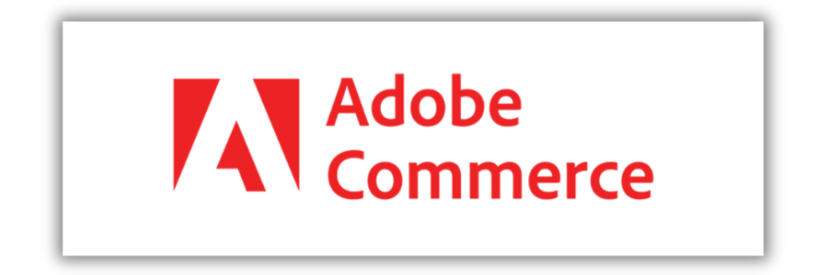
PrestaShop
PrestaShop is an open source solution that enjoys great popularity in France. Its strength lies in the balance it strikes between customization, autonomy and cost control.
– Advantages: open source, free, good customization, active French-speaking community.
– Limitations: fewer ready-to-use applications, requiring some configuration.
– Who’s it for? SMEs with a minimum of web knowledge, or a technical service provider

BigCommerce
BigCommerce is a feature-rich e-commerce CMS. It’s ideal for businesses looking for large-scale performance and flexibility.
– Advantages: good balance between simplicity and power, numerous integrated features (SEO, promotions, international payment).
– Limitations: slightly longer learning curve than Shopify.
– Who’s it for? Growing businesses with high sales volumes
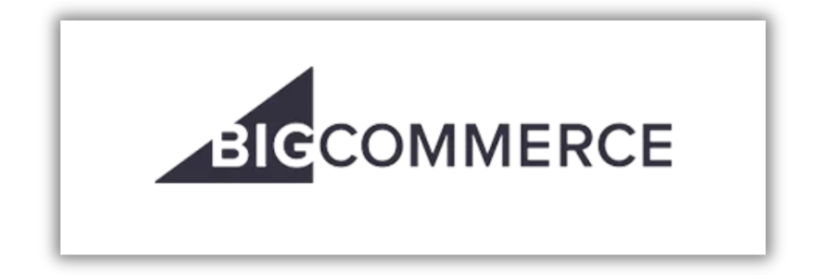
How to choose the right e-commerce CMS?
When it comes to e-commerce CMS, there’s clearly no one-size-fits-all solution. The right choice depends on your project, your budget, your technical skills and your ambitions.
Let’s take the example of two shoe sellers: the first sells locally with around 20 references, while the second wants to sell abroad with 1,000 products and multi-warehouse stocks. While the former may opt for Shopify or PrestaShop, the latter will be better off with a software solution such as BigCommerce or Magento. And it’s precisely in order to make the right choice that you need to ask yourself the right questions
What are your needs and objectives?
Before choosing your e-commerce CMS, start by clearly defining what you sell, to whom and in what proportions. Your needs will directly influence the most appropriate solution.
For example: for a few personalized products, Shopify will suffice. But for a large catalog with advanced filters, Magento is more appropriate.
What’s your budget?
The budget is a determining factor: beyond the subscription or license price, you need to think above all about hidden costs such as hosting, extensions or technical maintenance.
Good to know: WooCommerce, for example, is free to install, but often requires the addition of paid plugins to extend its functionality. What’s more, you’ll need to subscribe to a hosting service, the cost of which varies according to your needs¹:
– Shared hosting: between €5 and €20 per month.
– VPS (virtual private server) hosting: between €20 and €90 per month.
– Dedicated hosting: from €70 per month, rising to over €1,000 depending on performance requirements.
What are your technical skills?
Do you have technical skills or are you supported by a service provider? Mastering WordPress, managing updates or intervening in the code requires a minimum of web savvy. If this isn’t your case, a turnkey e-commerce CMS like Shopify will be more secure. On the other hand, if you have the technical resources, WooCommerce or Magento will give you greater freedom and customization options.
What are your customization requirements?
Do you want a 100% customized design? Do you need specific functionalities? Depending on your answers, Magento and WooCommerce offer advanced customization options. Shopify, on the other hand, is more accessible and offers pre-designed themes that are considered easier to use.
What are your SEO requirements?
Search engine optimization (SEO) is essential for attracting traffic without relying solely on advertising. If you want to optimize each page in detail, WooCommerce and PrestaShop give you a great deal of freedom. Shopify, on the other hand, offers effective but more standardized SEO tools.
What are your scalability requirements?
Will your business grow rapidly? What’s certain is that your e-commerce CMS must be able to keep pace with your growth without slowing down. Magento and BigCommerce are designed to handle high volumes of traffic and orders. Shopify can also grow with you, but with certain technical limitations to be anticipated, such as managing very large catalogs or integrating complex third-party systems, for example.
Tips for a successful migration to a new e-commerce CMS
Migrating to a new e-commerce CMS can seem daunting, especially if your current site is already generating traffic or sales. However, a well-prepared migration is an opportunity to improve the customer experience, integrate new functionalities and boost your online visibility https://global.fr.shopping.rakuten.com/actualites/visibilite-et-marketplace/. Here are the steps to follow to ensure a smooth transition, without loss of data or impact on your business.
Migration planning in detail
A successful migration depends above all on good organization. Define in advance:
– Your objectives: do you want to improve ergonomics, performance or product management?
– A realistic timetable, with room for unforeseen events.
– The human and technical resources available (in-house team, service providers, etc.).
Data backup
Before any manipulation, it is imperative to secure all your data:
– Products: names, descriptions, prices, references, images..
– Orders: history, payments, status..
– Customers: contact details, accounts, preferences..
Our advice: create a complete backup of your site, via your host or a dedicated plugin, so that you can restore everything in the event of a problem.
Choose the right hosting
If you’re migrating to an open source e-commerce CMS like WooCommerce or PrestaShop, hosting is a critical point. Check:
– Performance (speed, traffic capacity)
– Technical compatibility with your new CMS (PHP versions, database…)
– Customer support and security options (SSL certificate, automatic backups…)
Good to know: good hosting contributes directly to the speed of your site… and to your conversion rate.
Test your new CMS before going live
Before you go live with the new version of your site, you should test each and every element of your CMS to avoid any missteps:
– The complete shopping path (search, shopping cart, payment).
– Product sheets, filters and forms.
– Mobile and tablet display.
– Payment and delivery modules.
Our advice: create a “test” version of your site to validate functionalities without impacting your current visitors.
Redirect old URLs
There are several tricks you can use to maintain your organic search ranking (SEO), but also to avoid 404 errors:
– List all important old URLs.
– Set up 301 redirects to new pages.
– Use tools like Google Search Console to check that everything is taken into account.
Good to know: migration without redirection can lead to a sharp drop in organic traffic.
Train your team to use the new e-commerce CMS
A well-trained team is a major asset to the success of your e-commerce business. Even the best e-commerce CMS in the world will only be useful if your team knows how to use it. To optimize this process, we recommend:
– Organize training sessions.
– Create internal guides for key tasks.
– Encourage your staff to ask questions and take ownership of the tool.
What about a marketplace?
Creating your own website is a fine step, but it’s not the only one. To gain visibility, it’s often wise to multiply sales channels, and a marketplace is a highly effective complementary solution. On Rakuten, you benefit from a turnkey environment, qualified traffic and personalized support to help you succeed online, even without an e-commerce CMS. Seize the opportunity!
Sources:
¹Shopify

